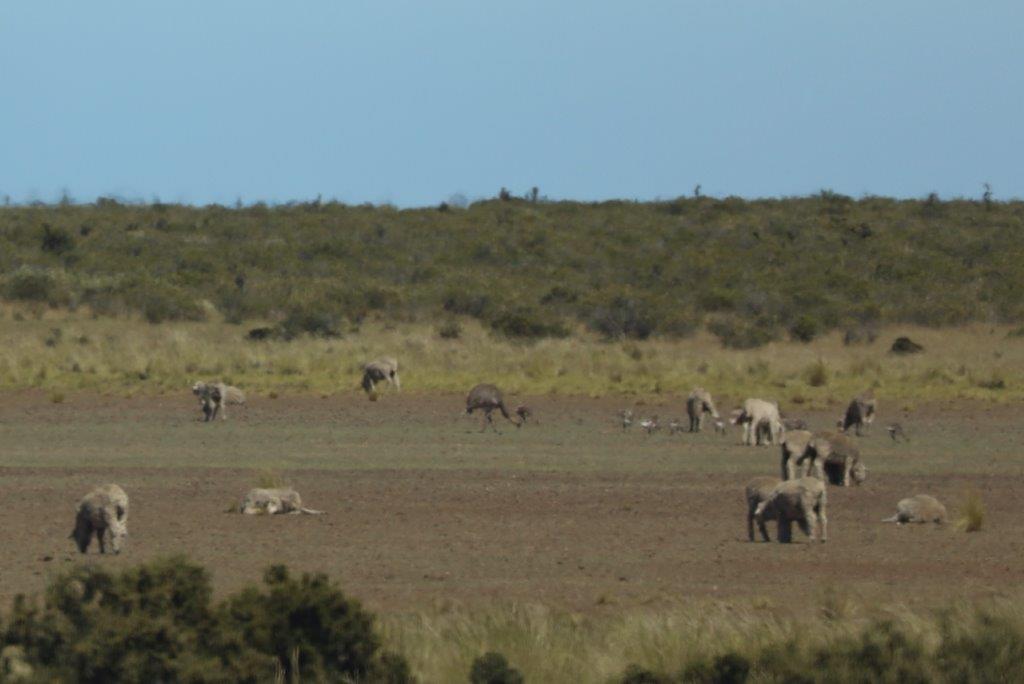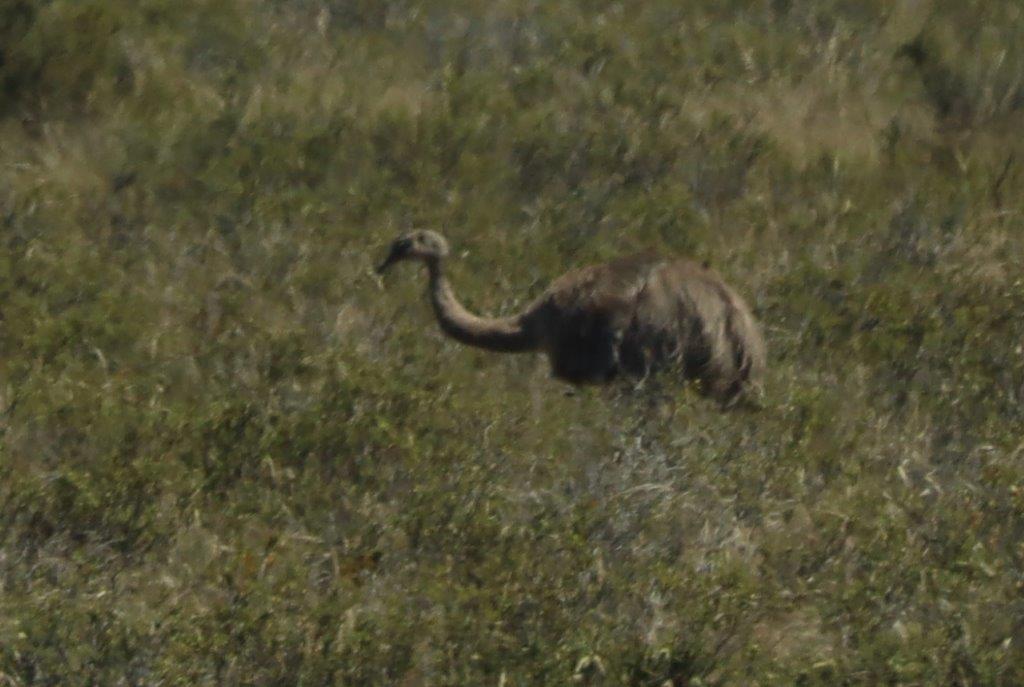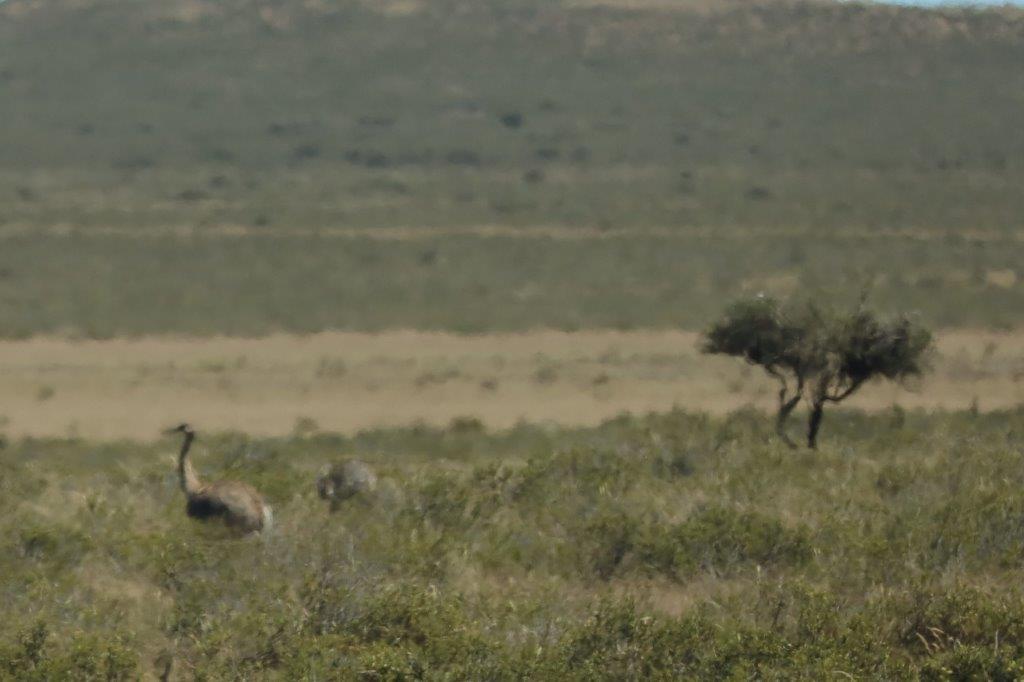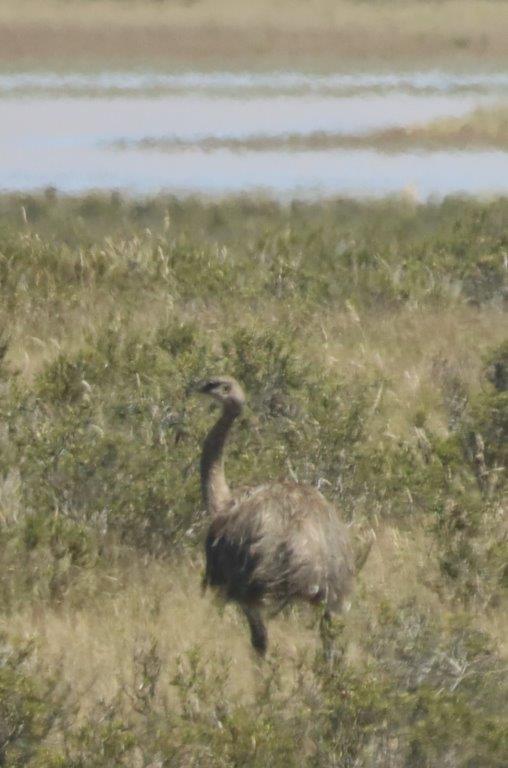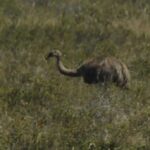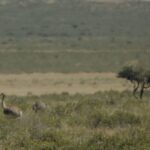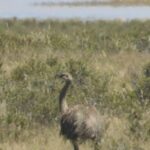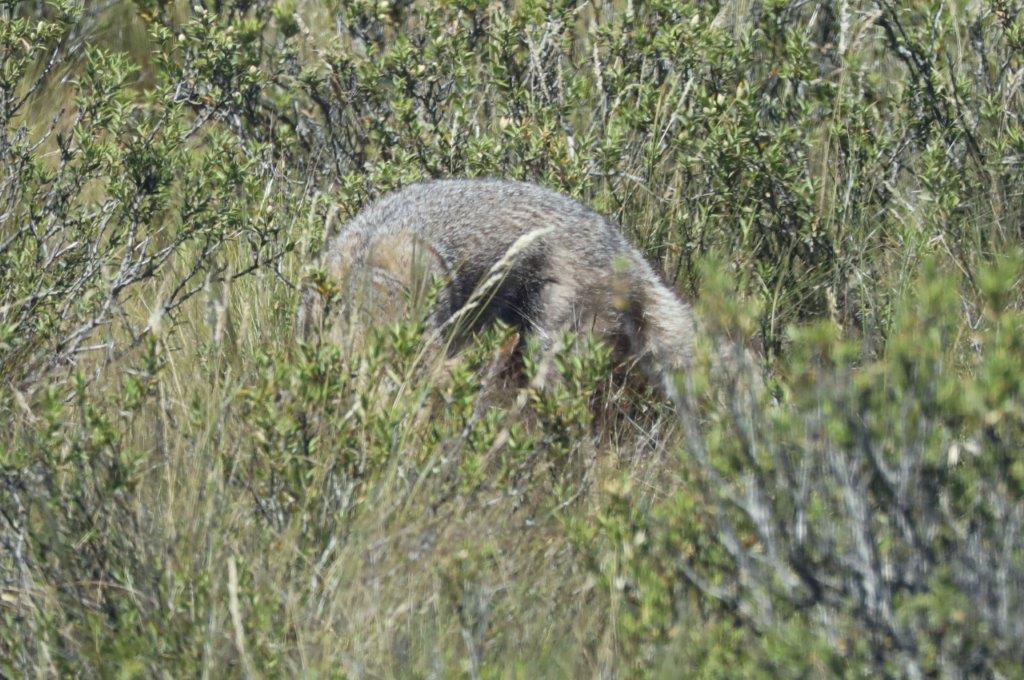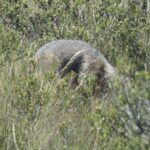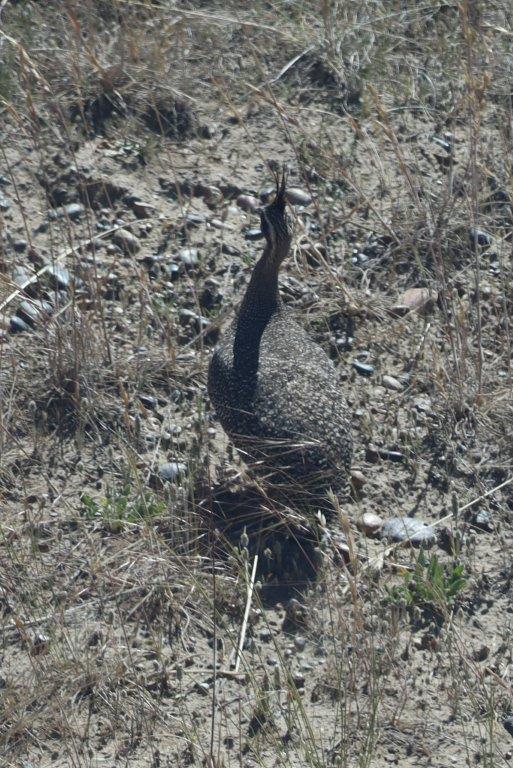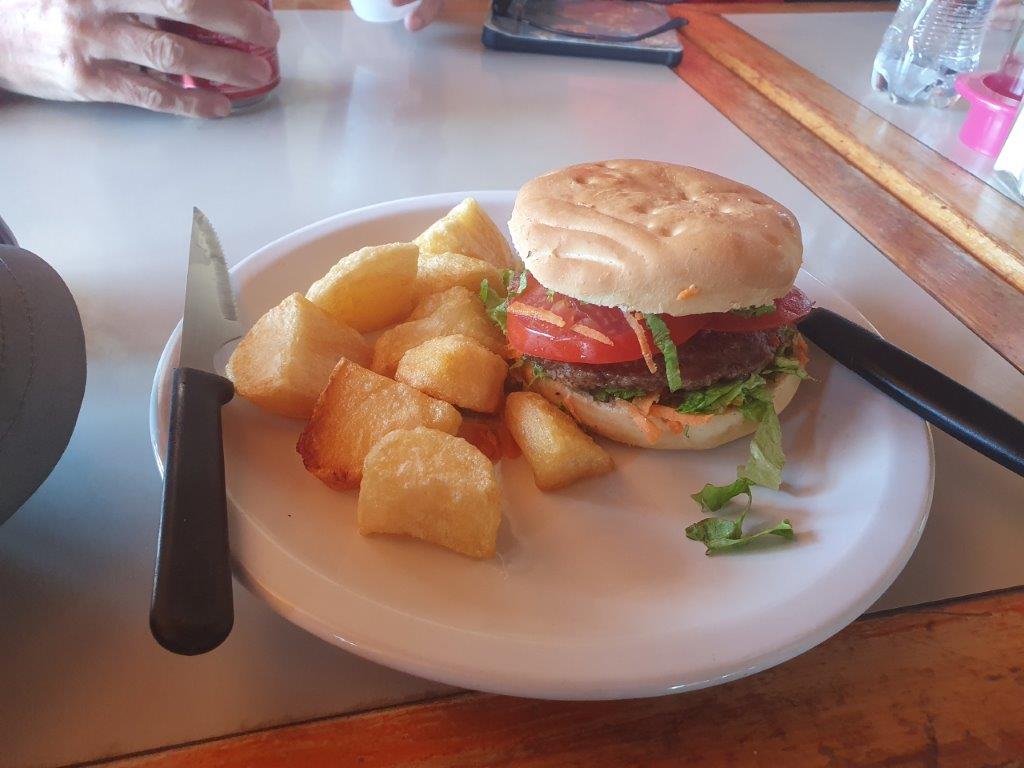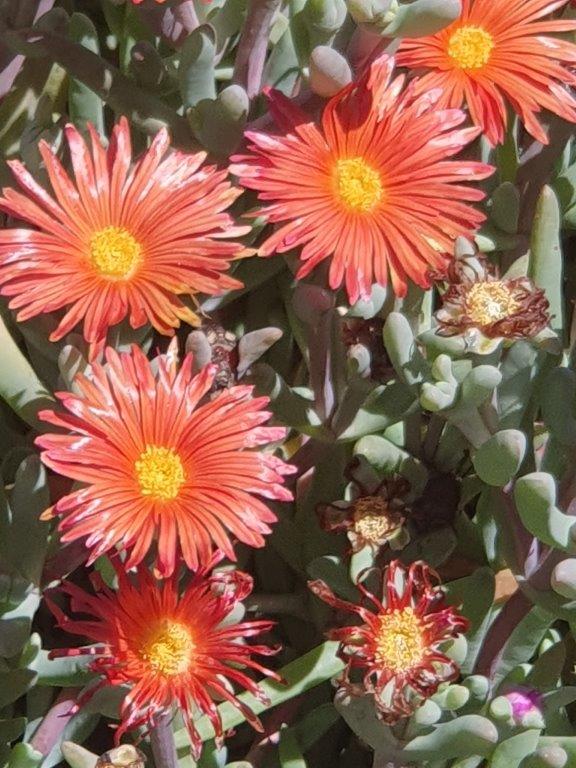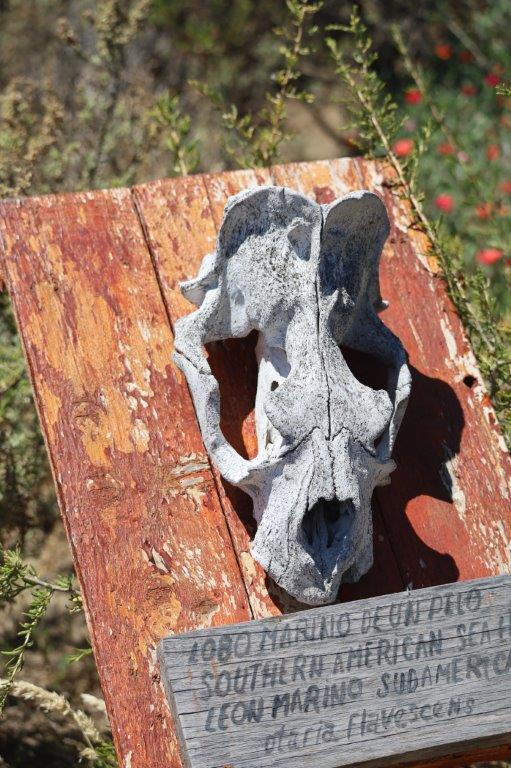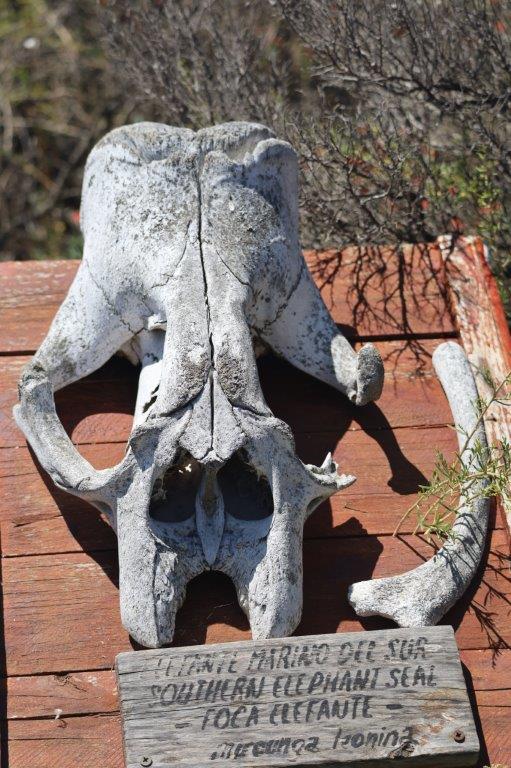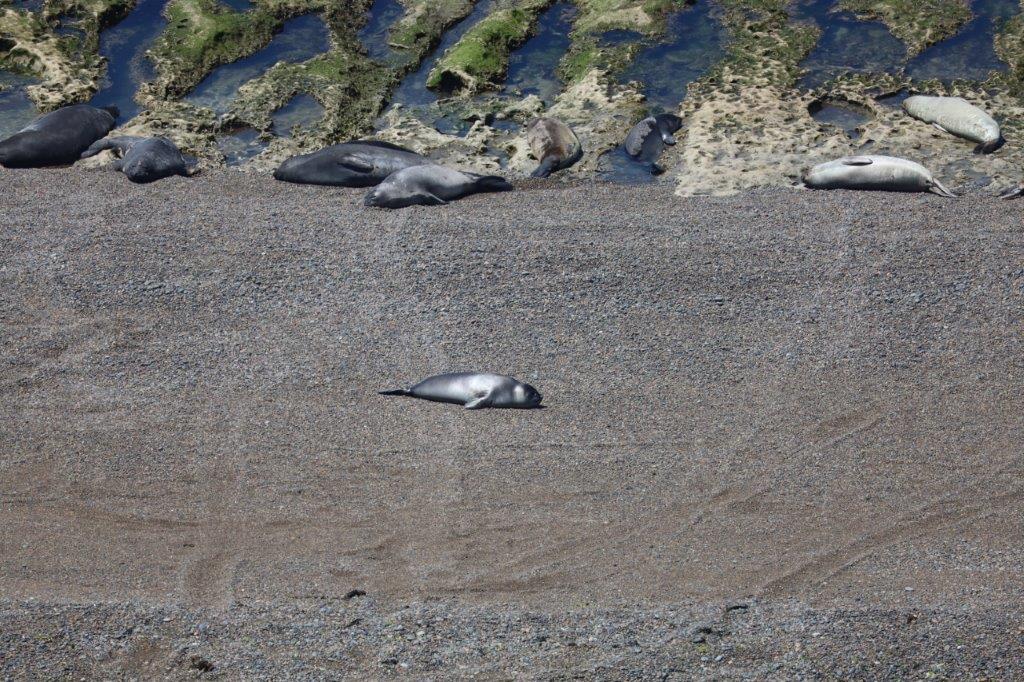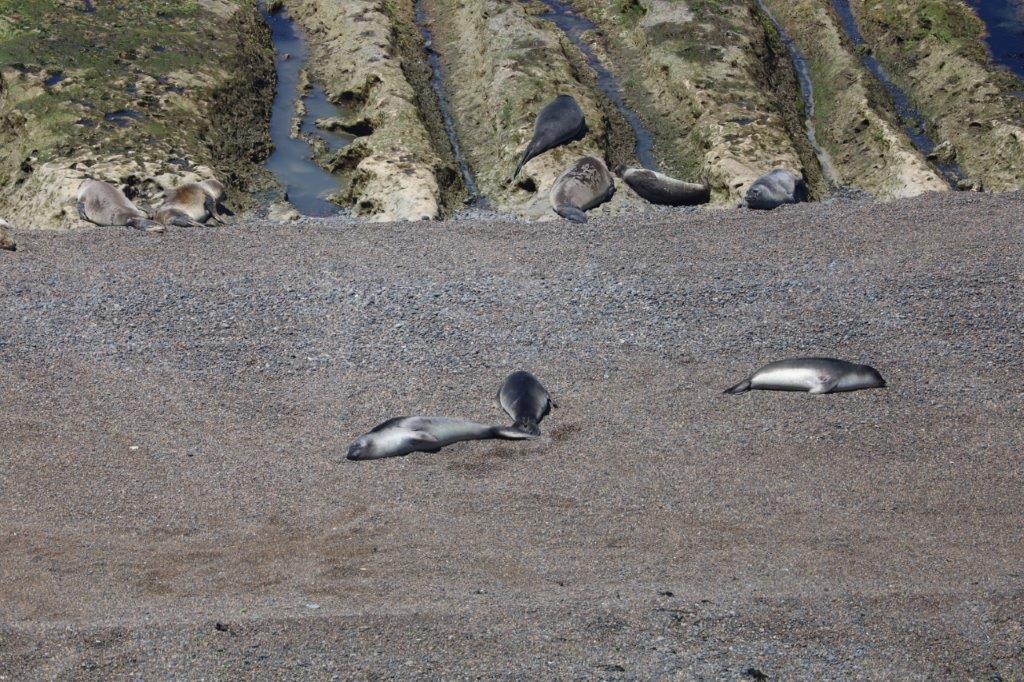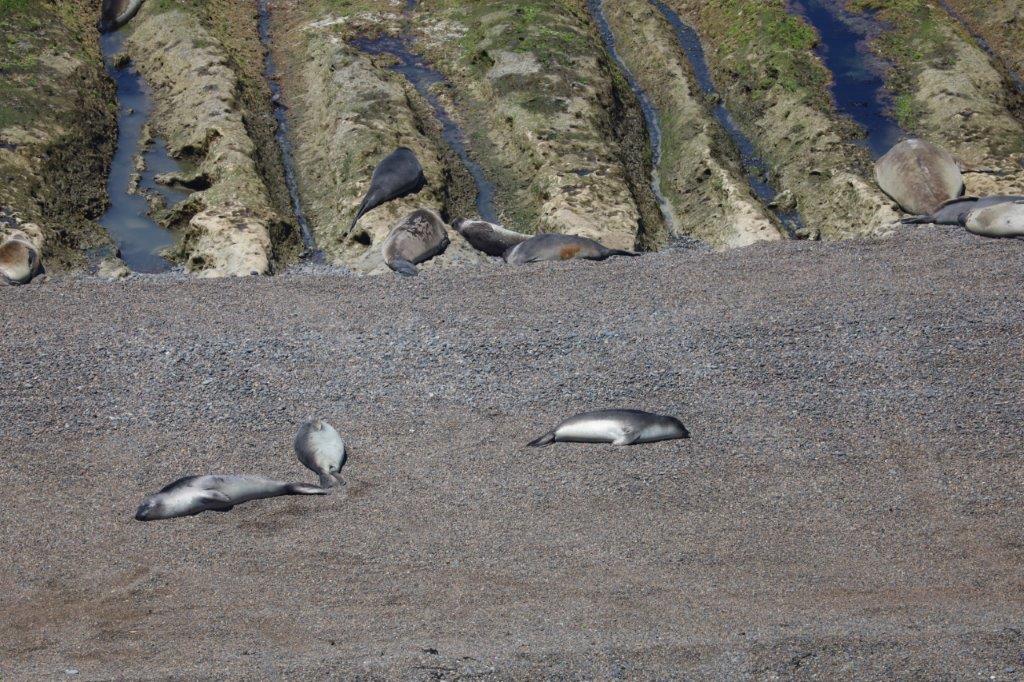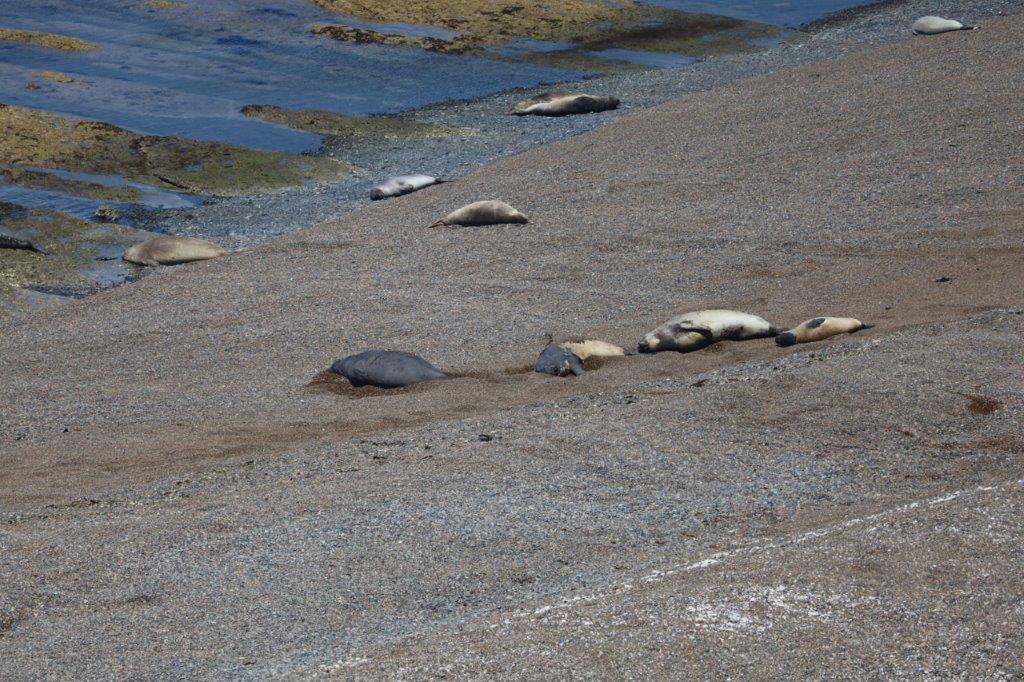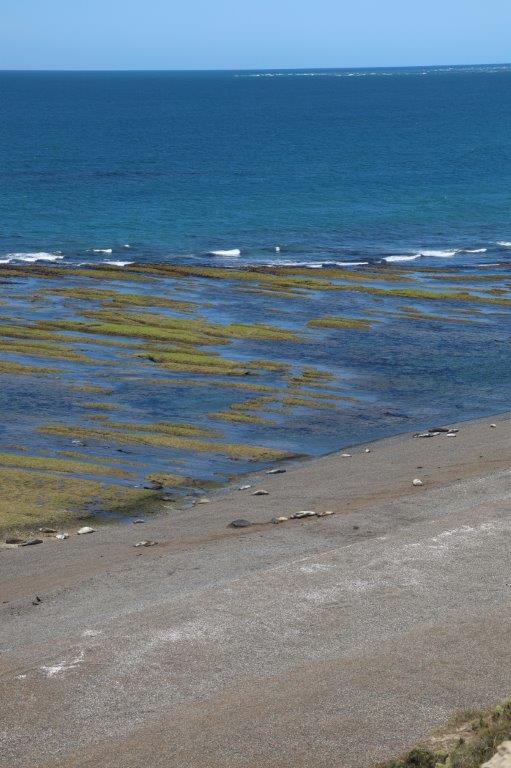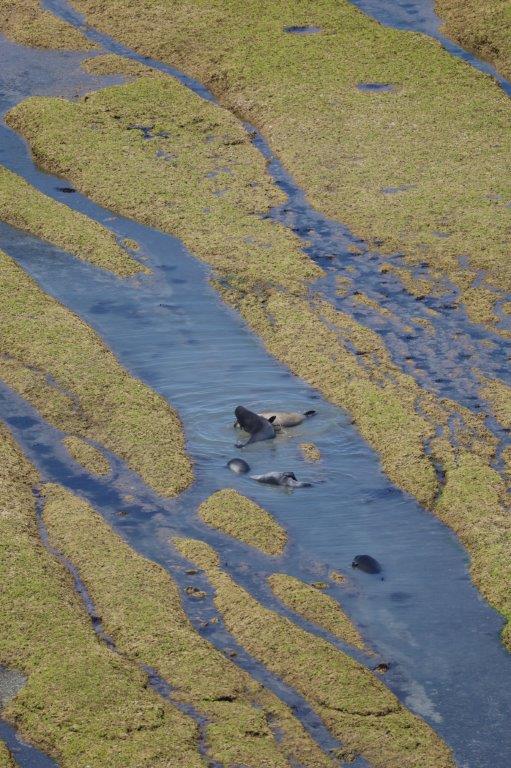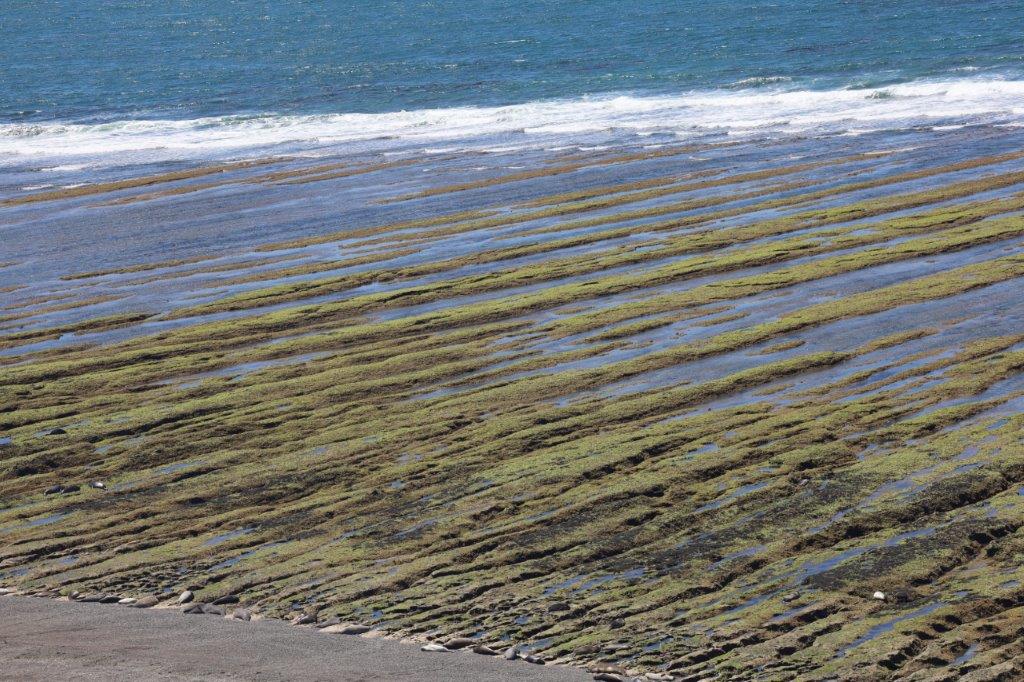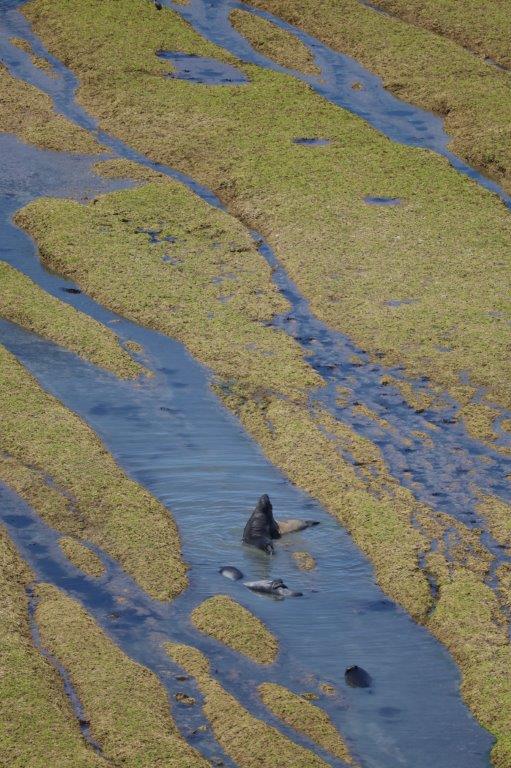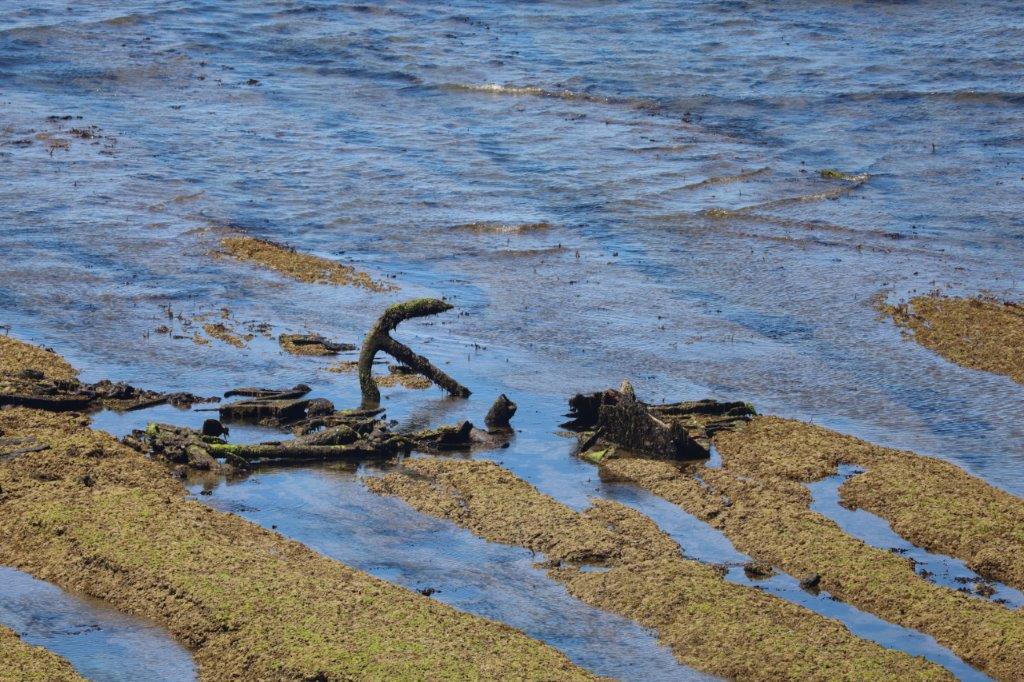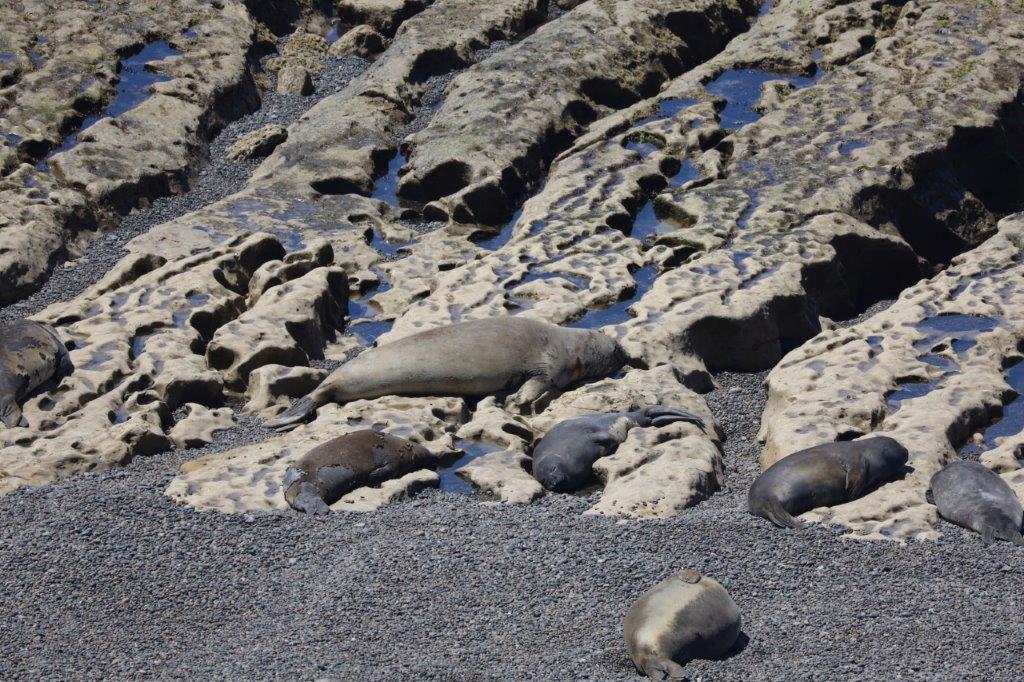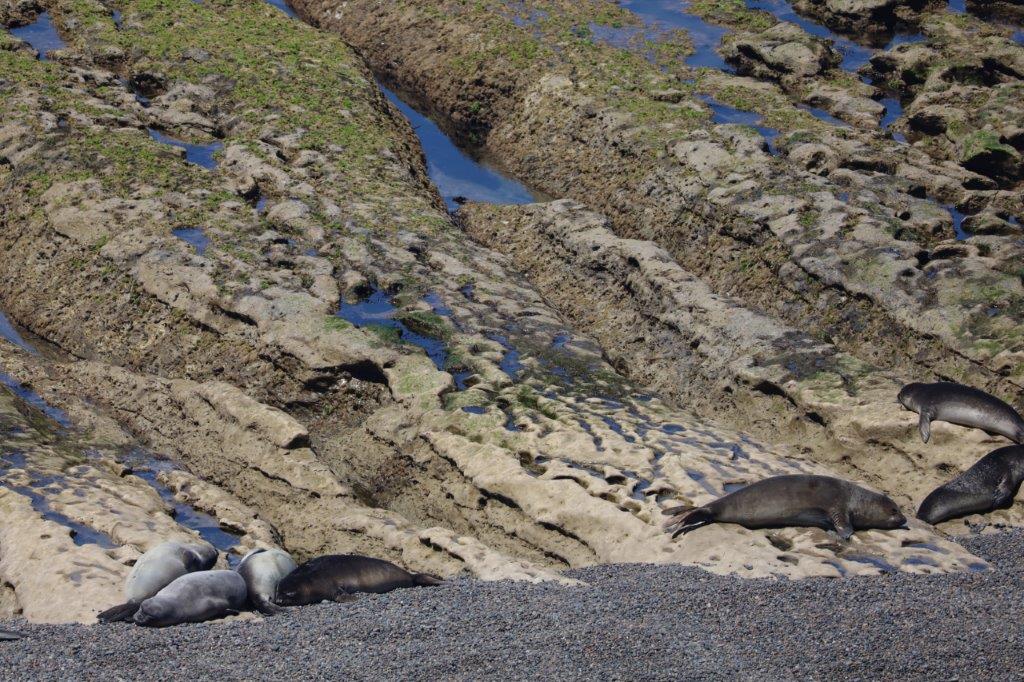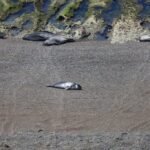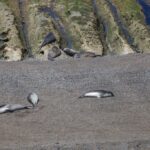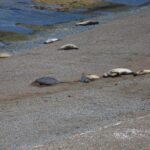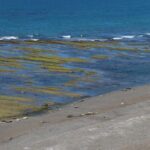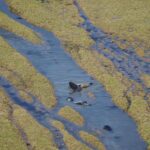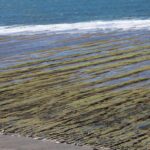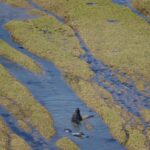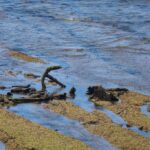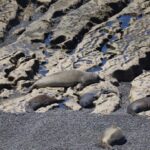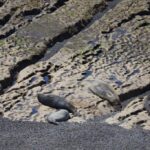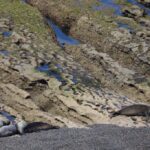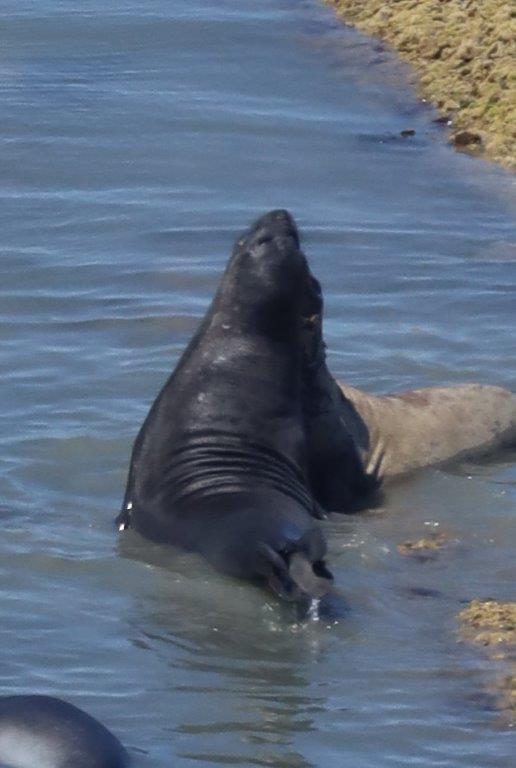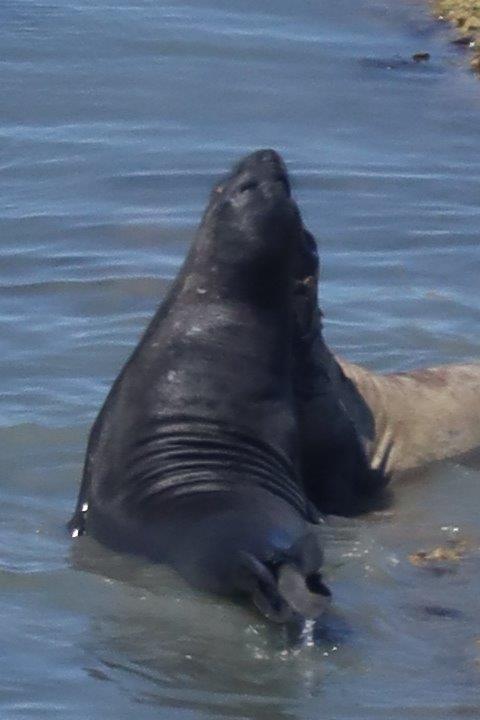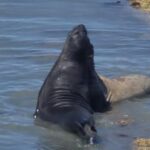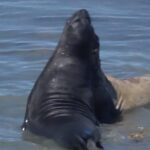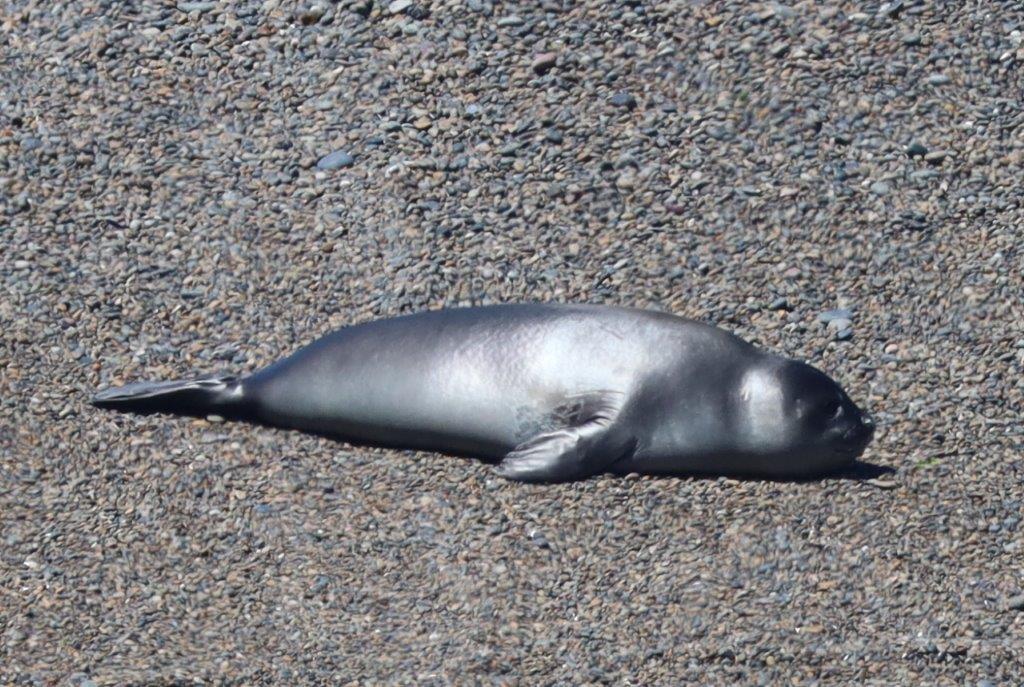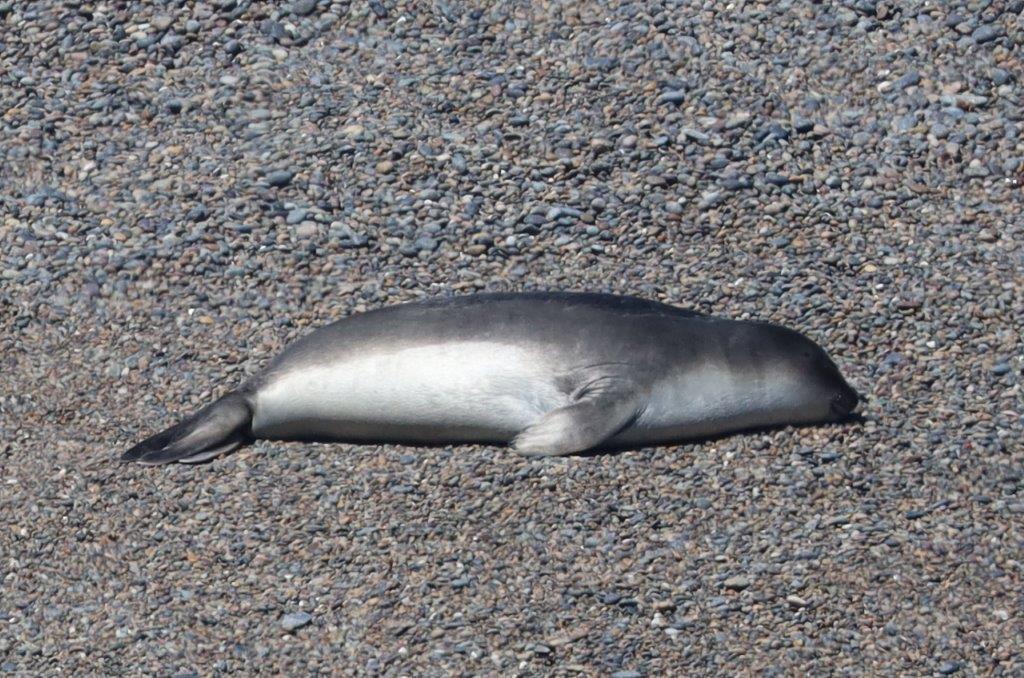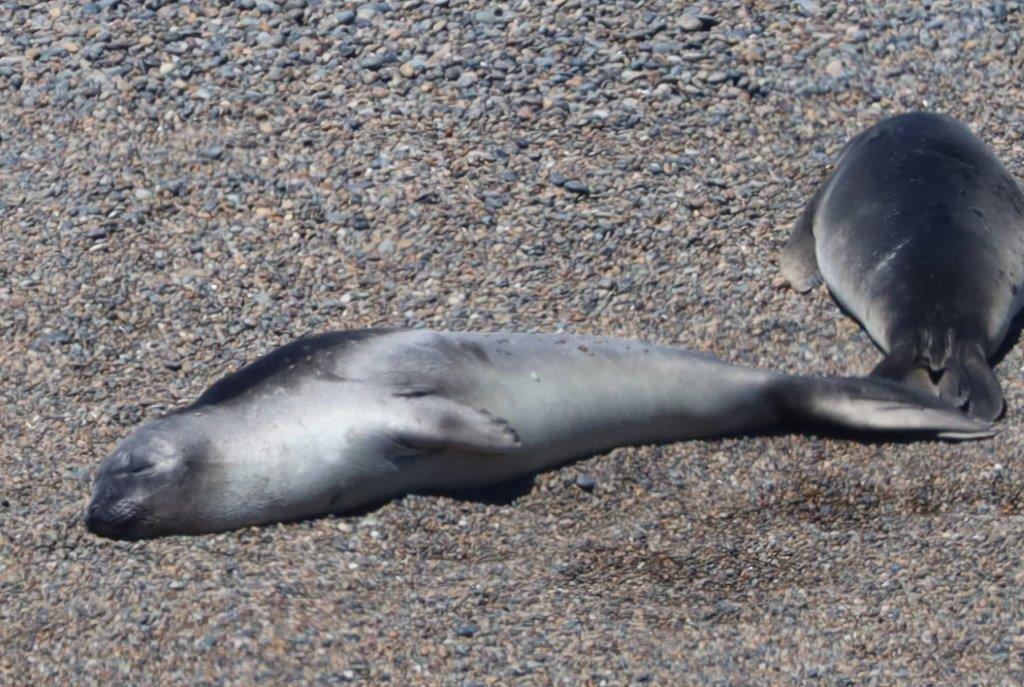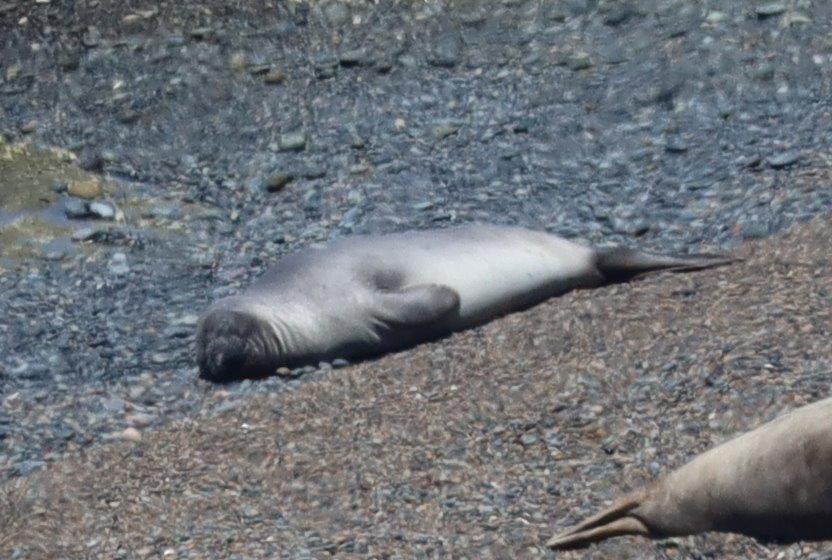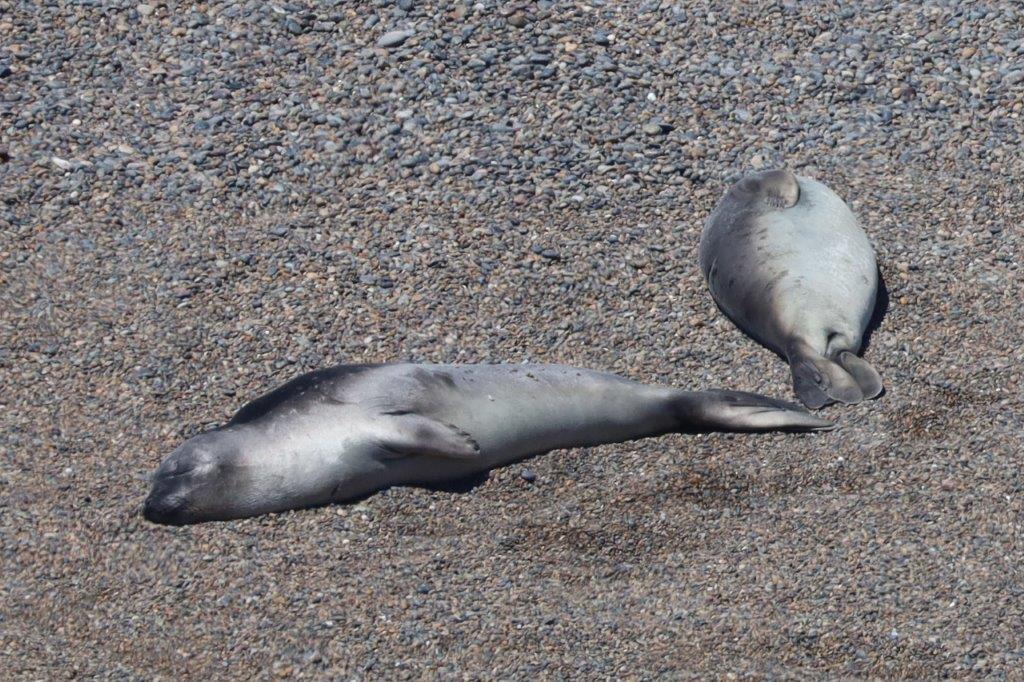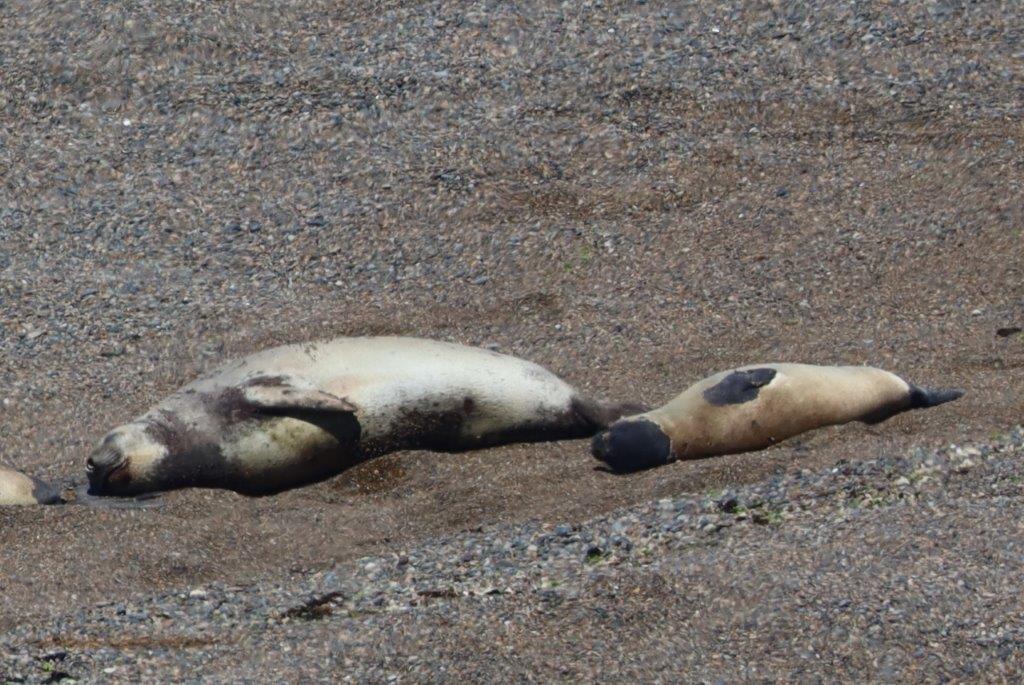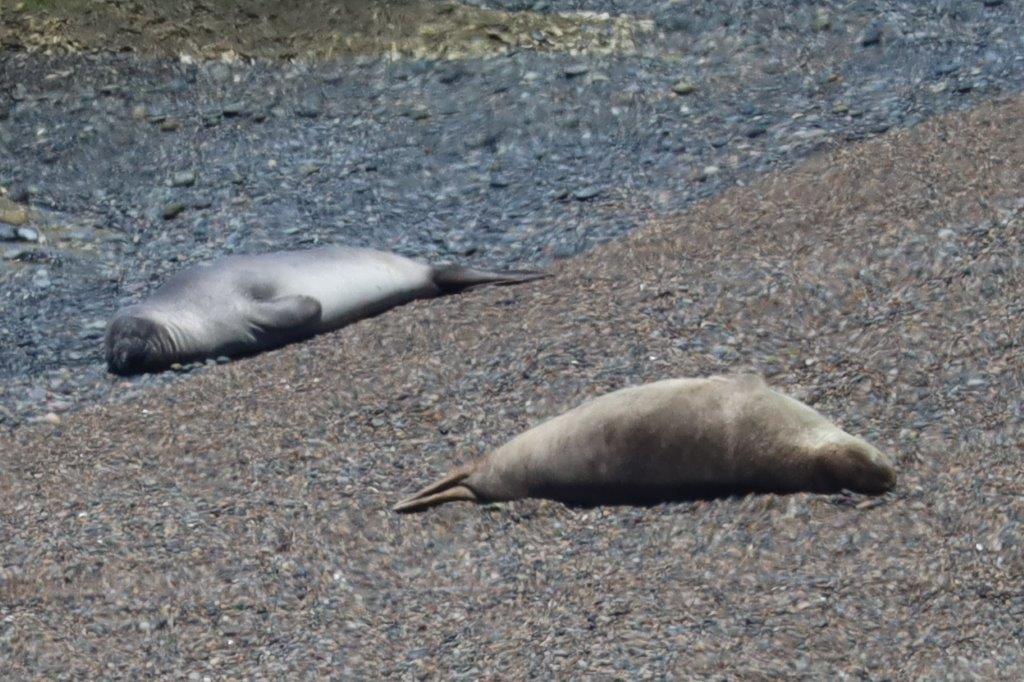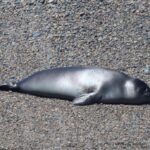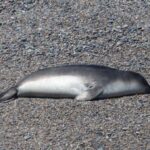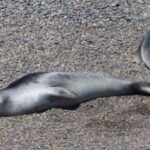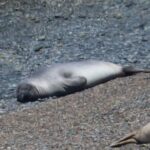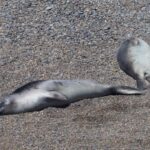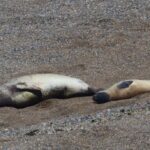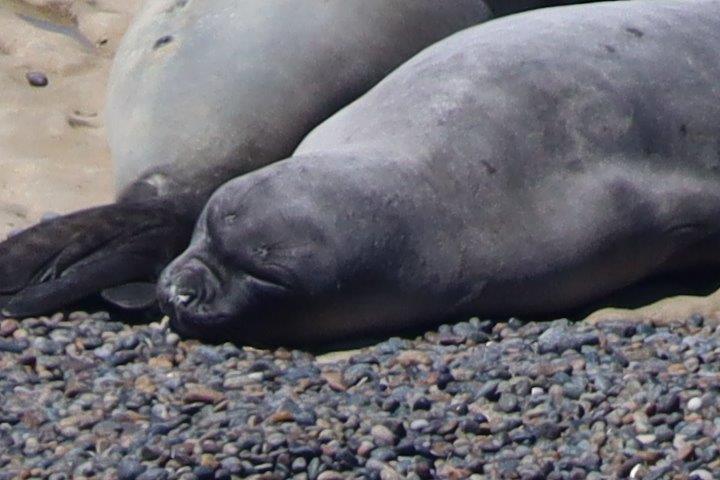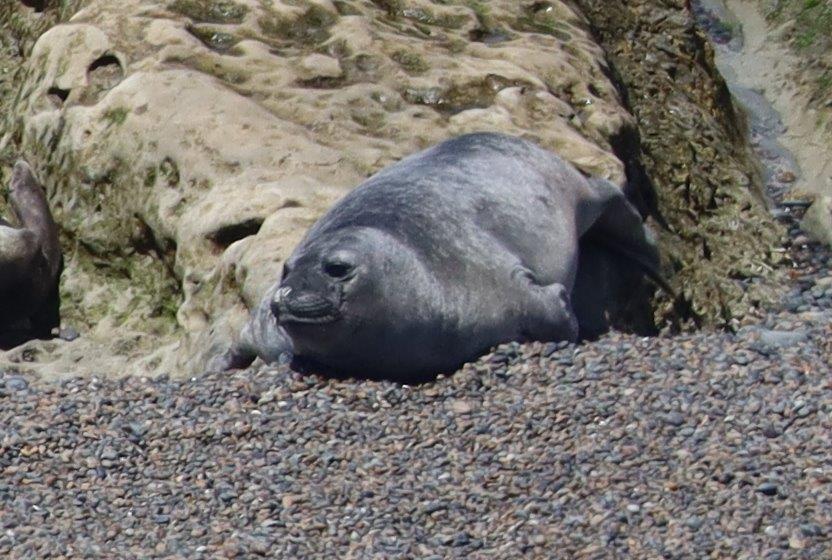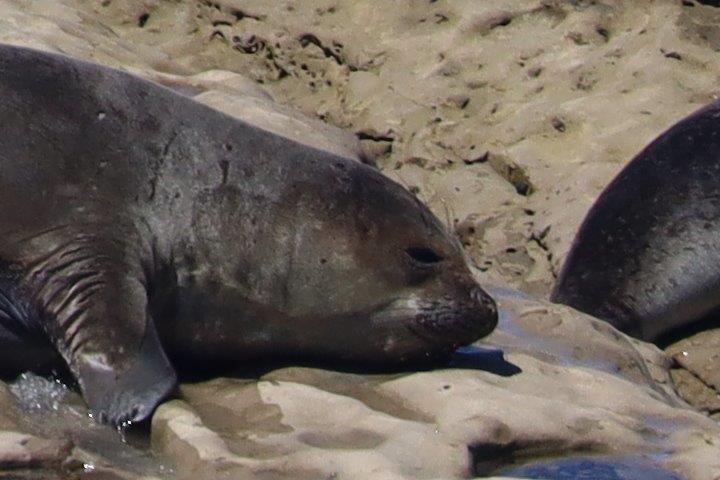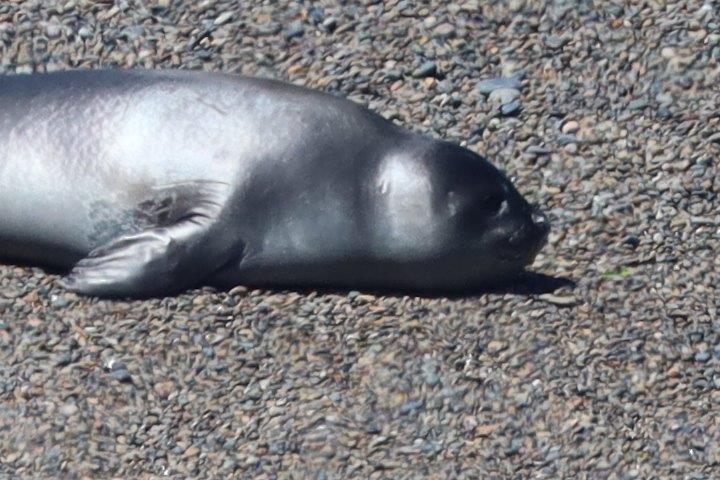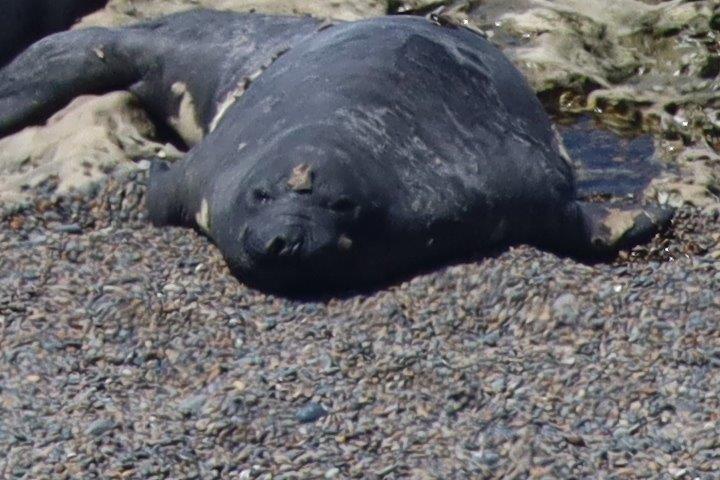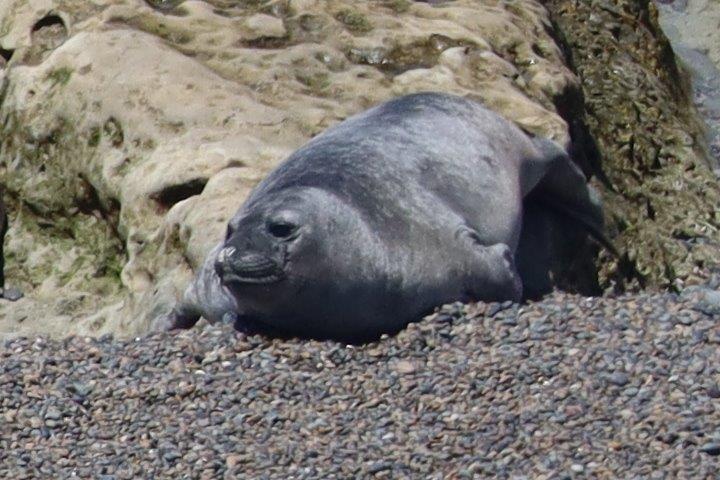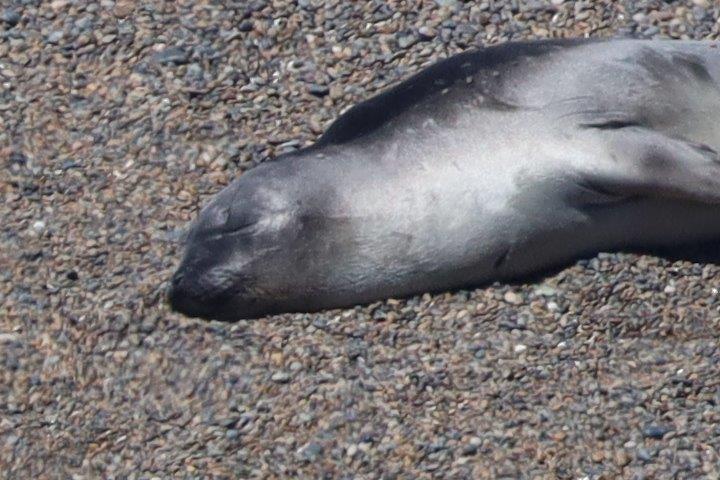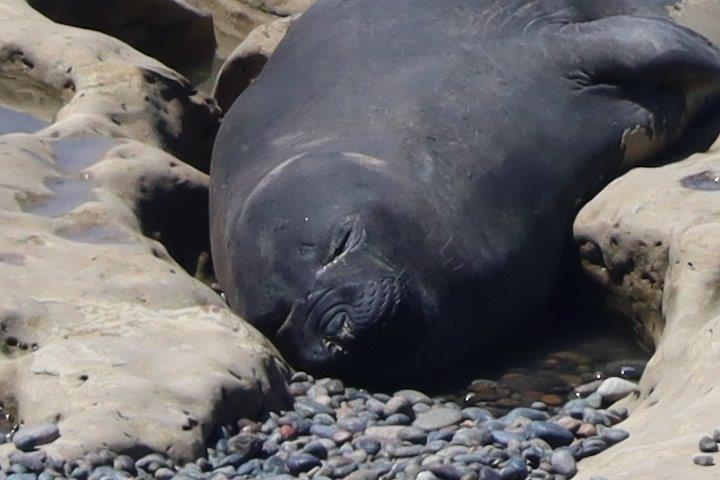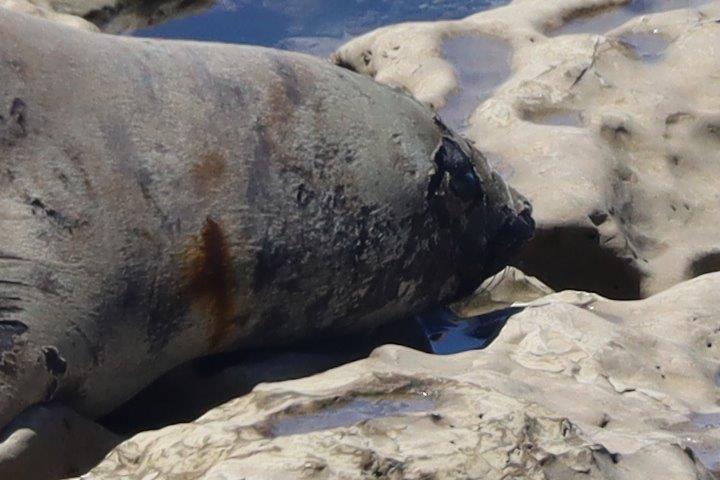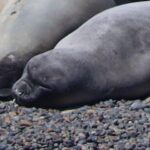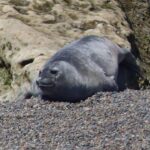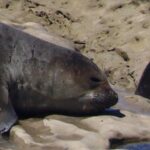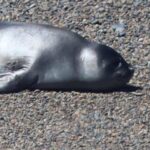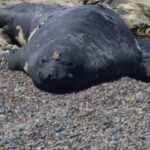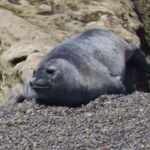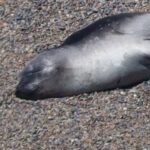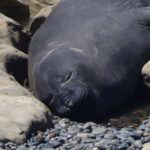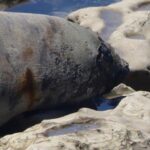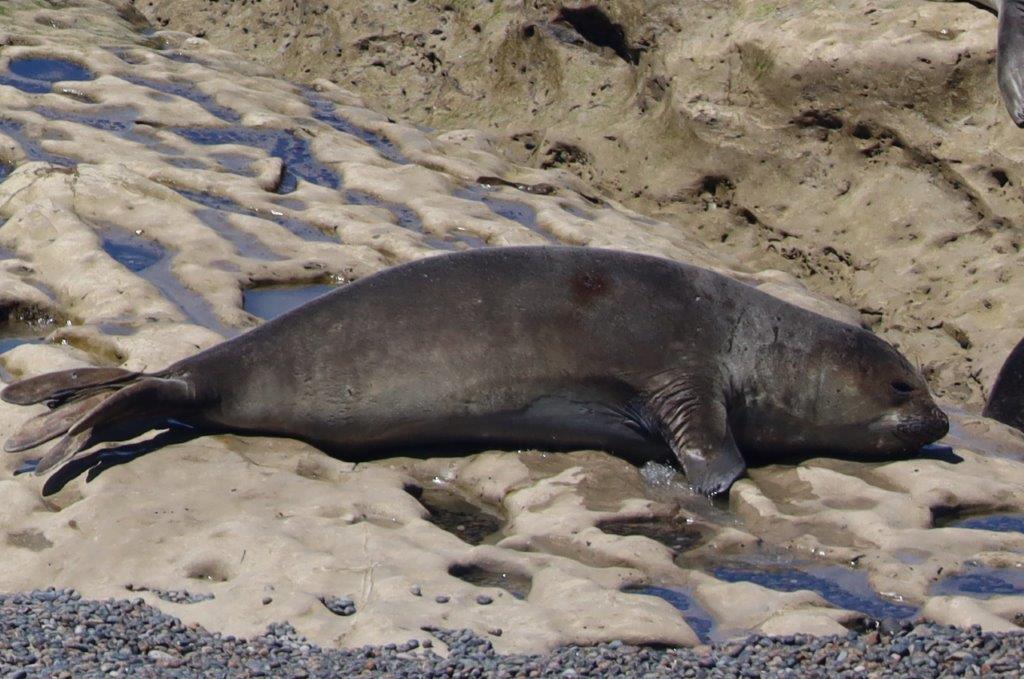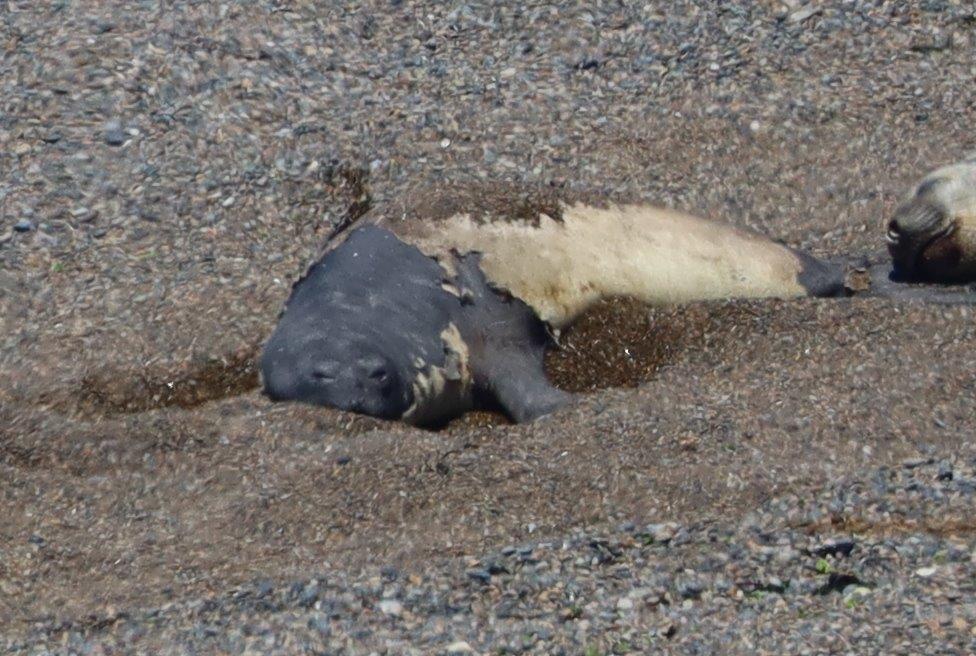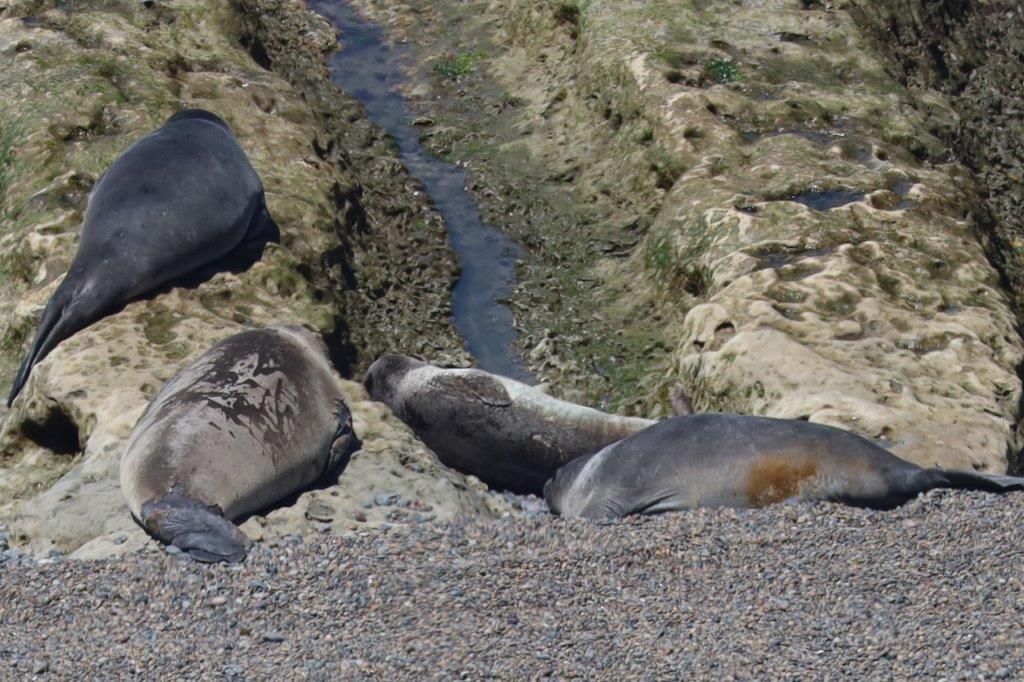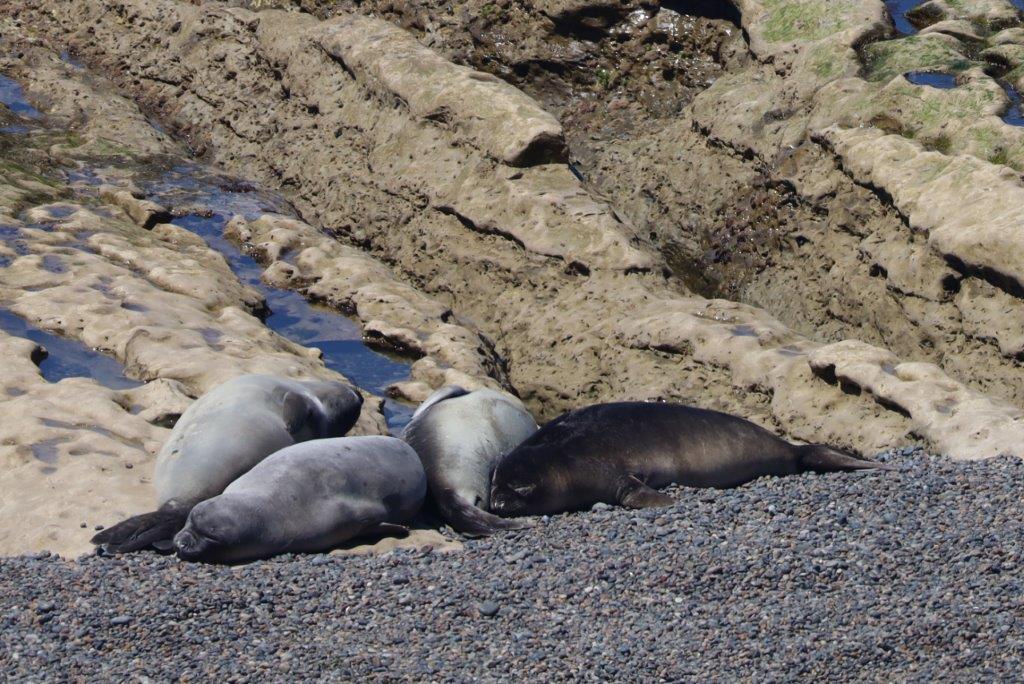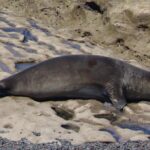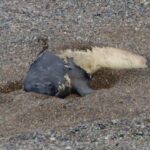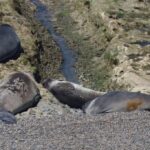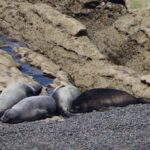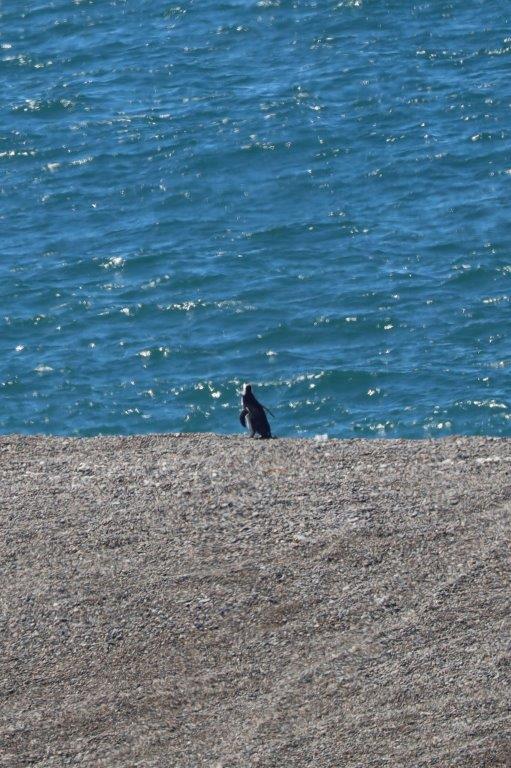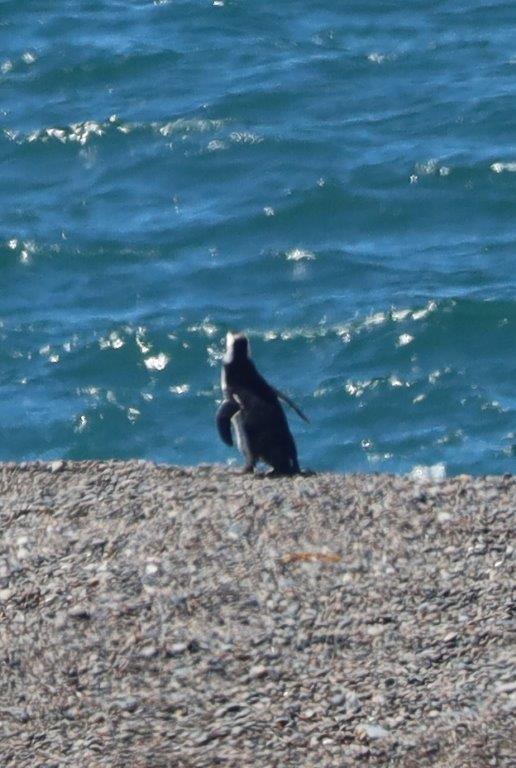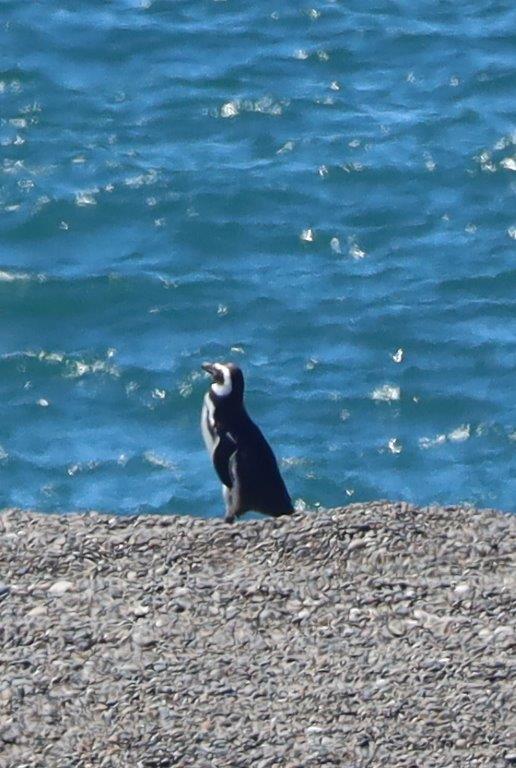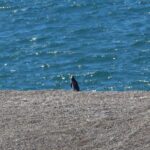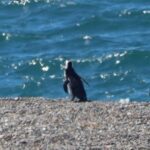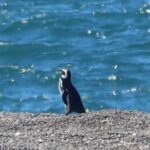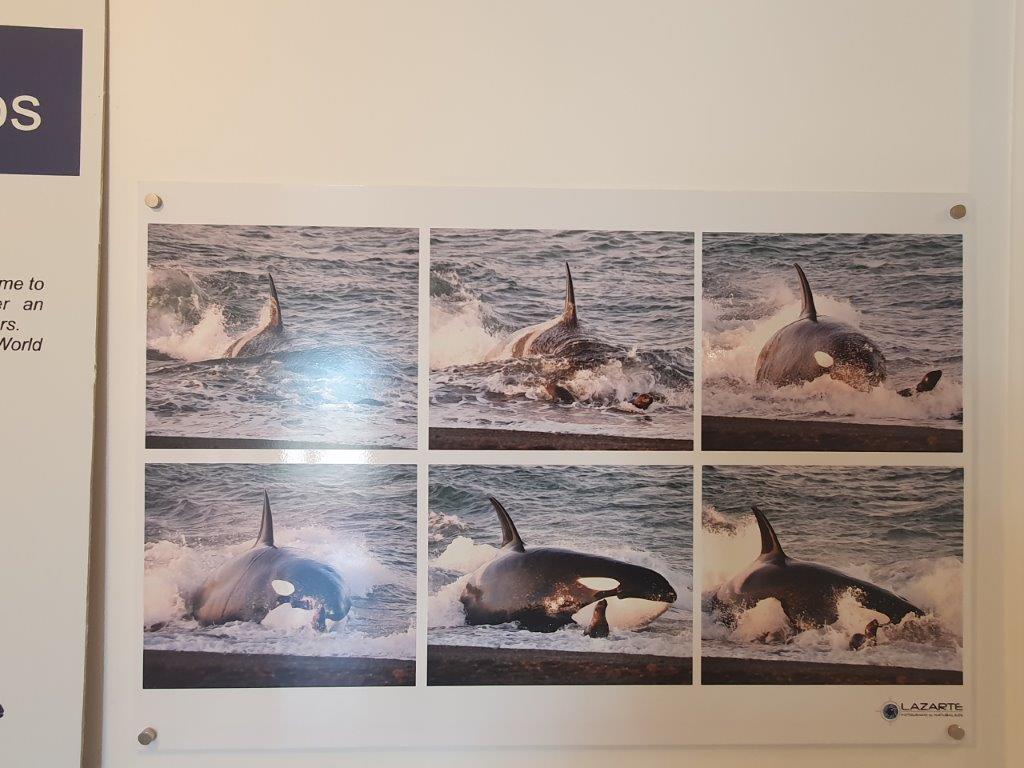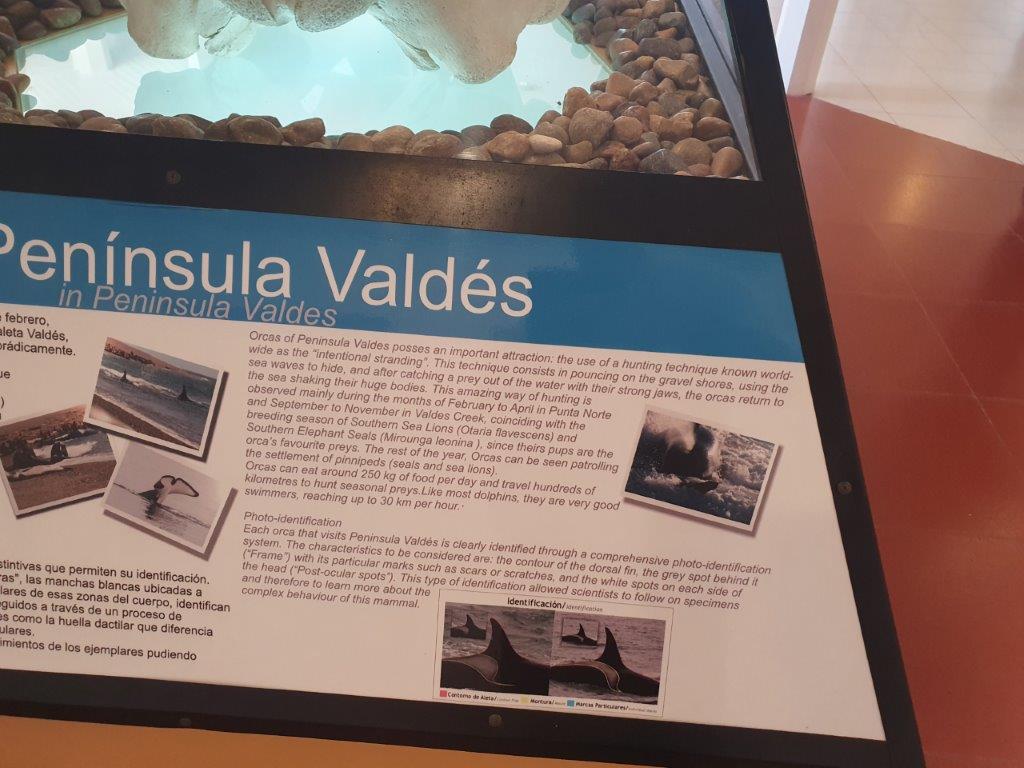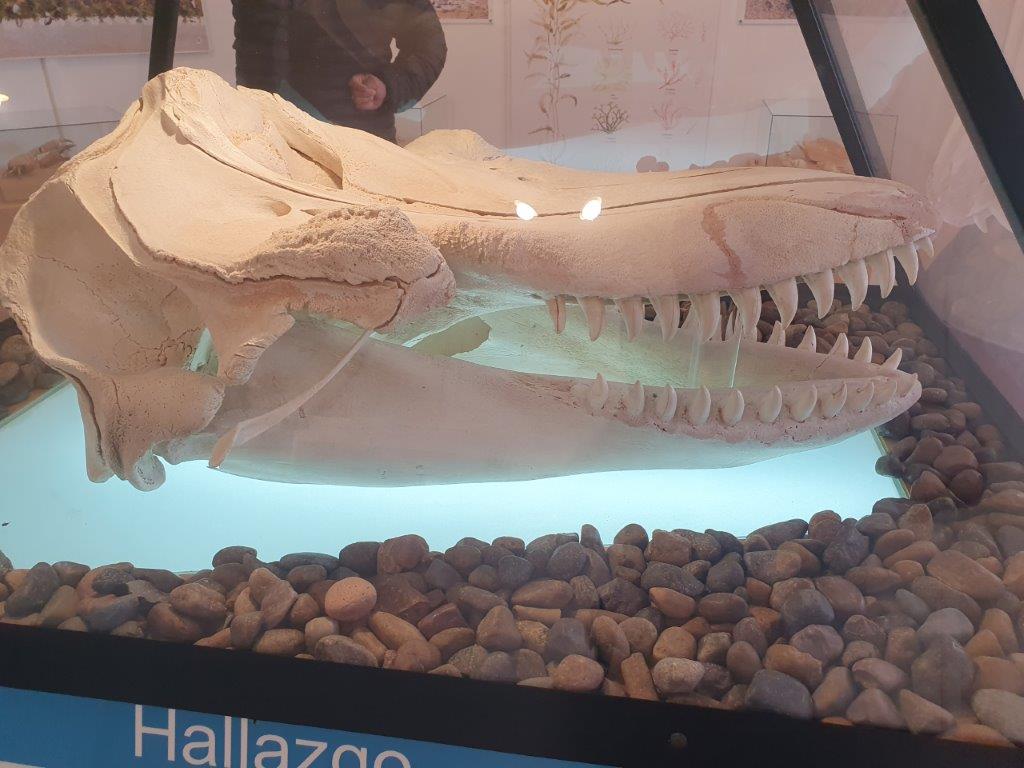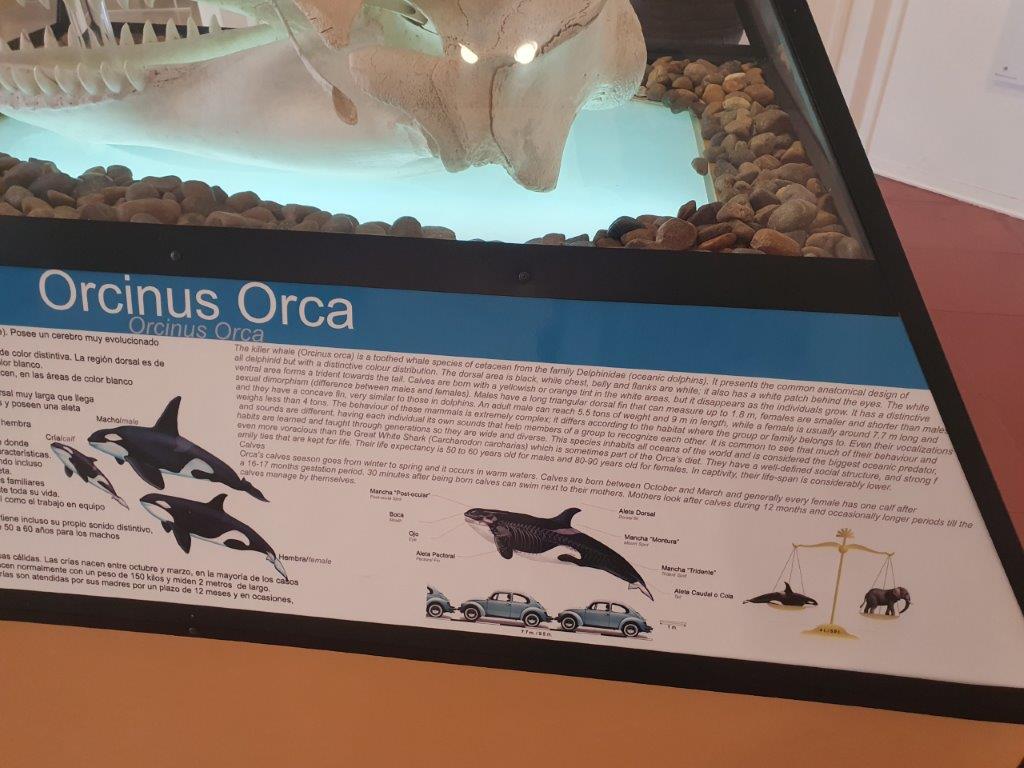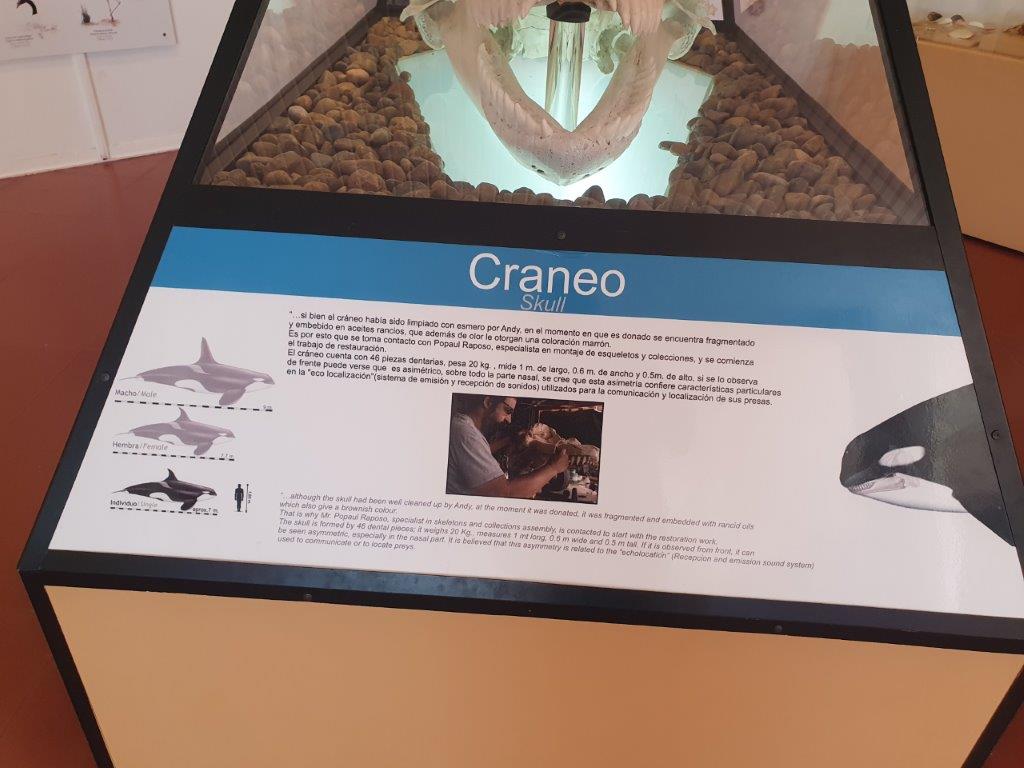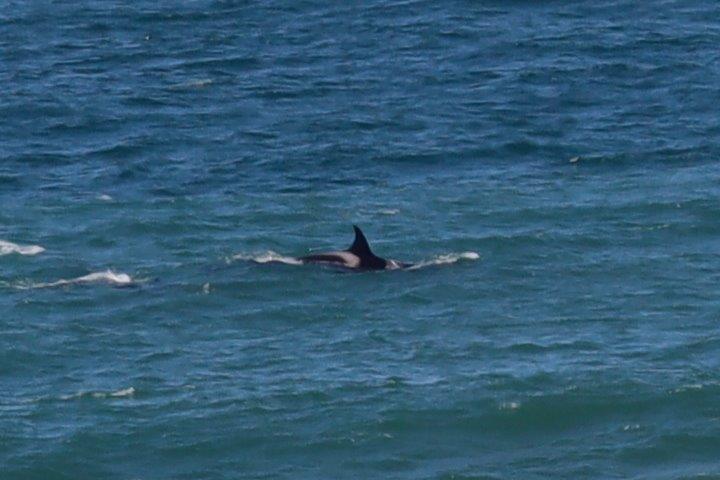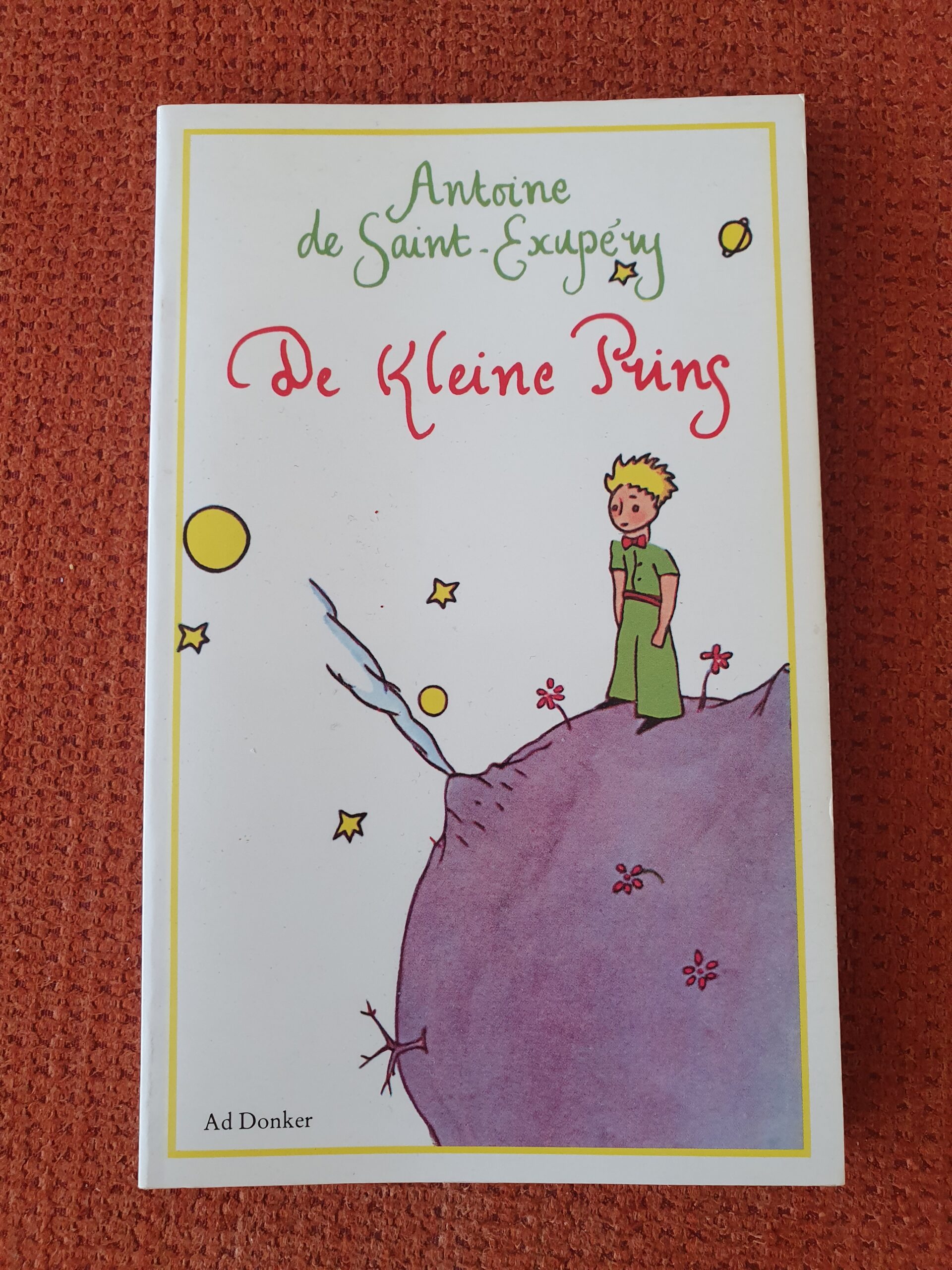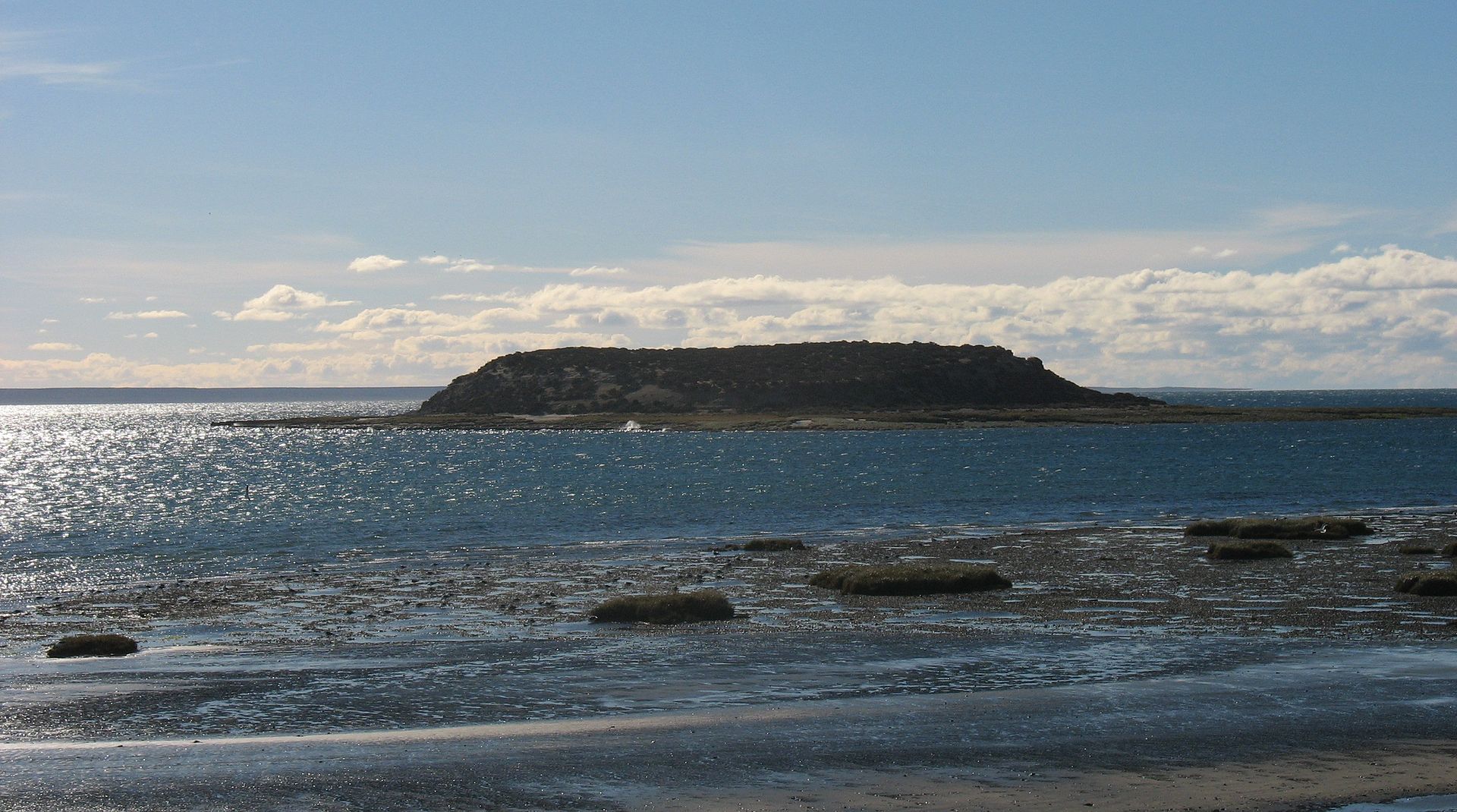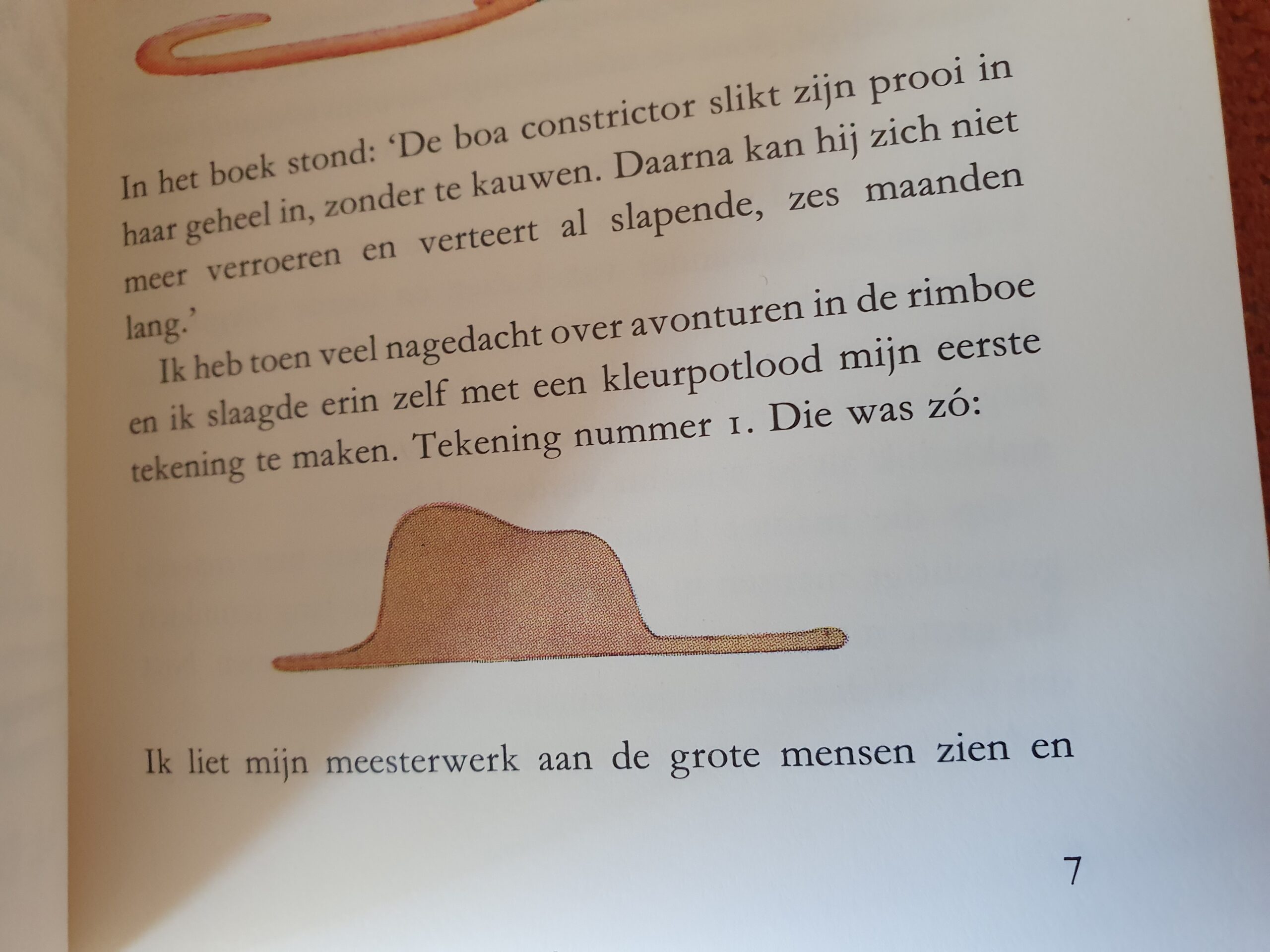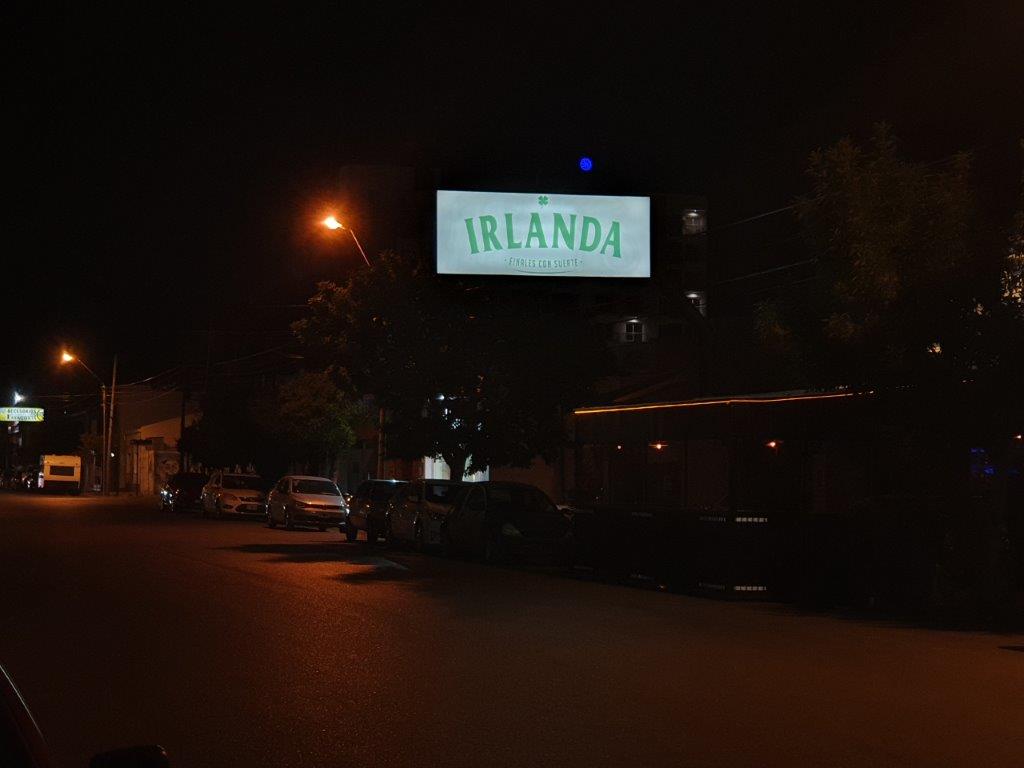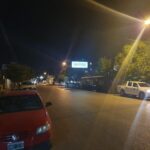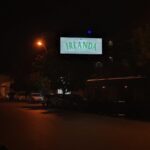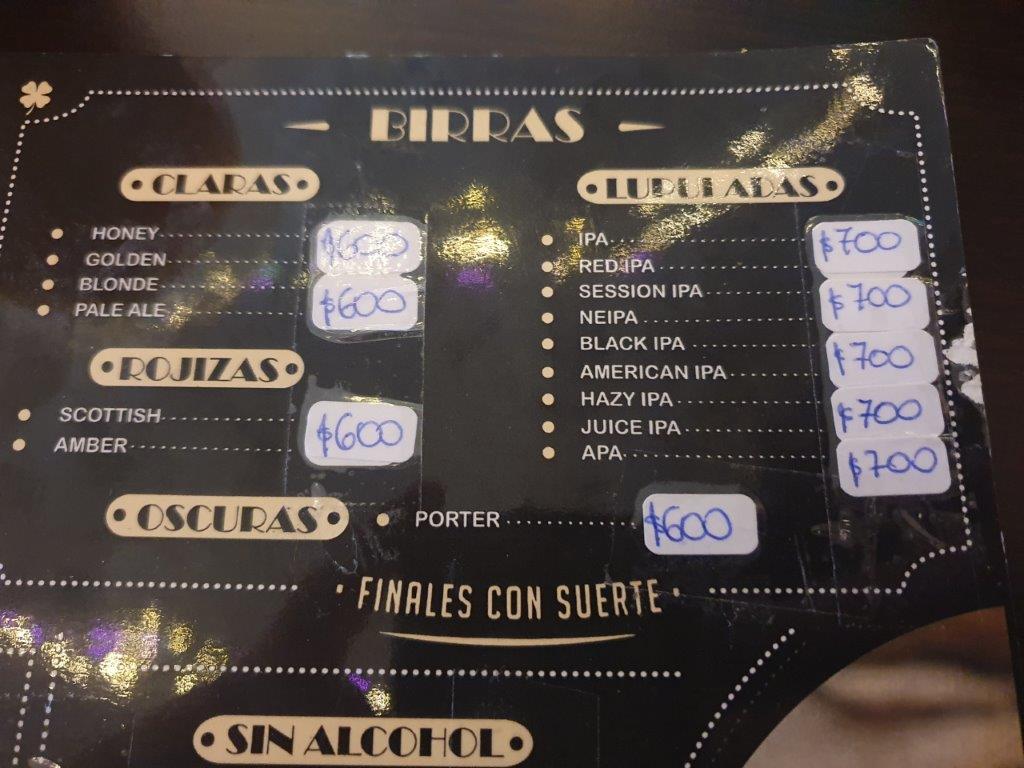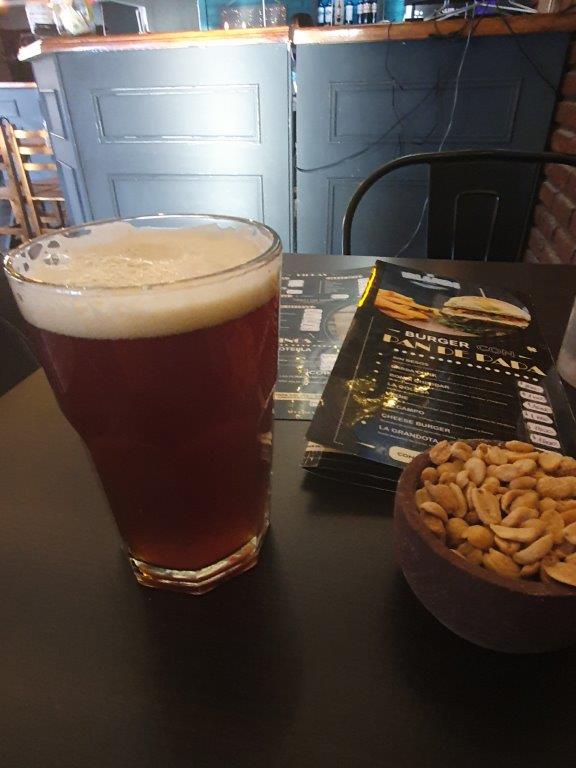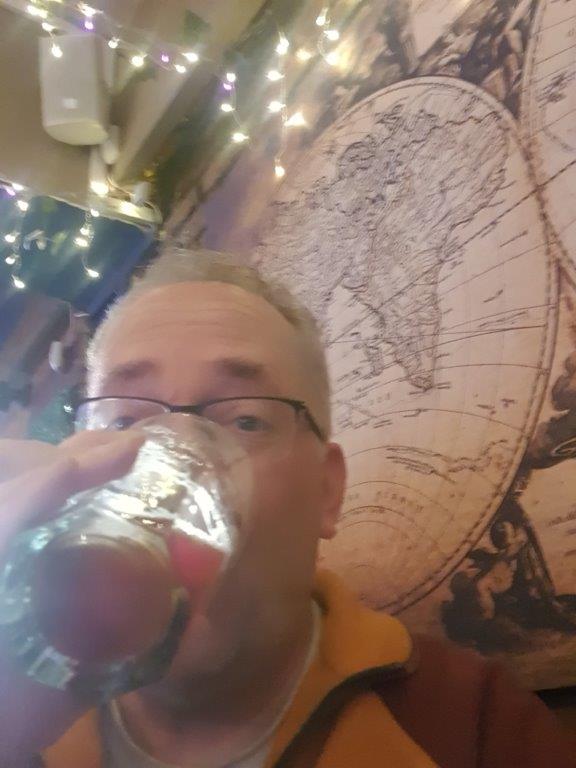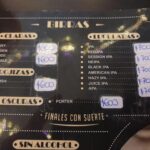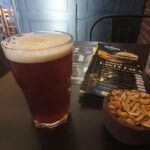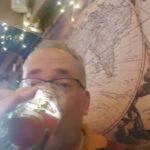8. Argentina: Marine wildlife from Elephant Sea lions to Orca Killer Whales (Peninsula Valdes Nature Reserve/UNESCO World Heritage)
Wildlife on the peninsula Valdes
There was so much more to see in this UNESCO World Heritage Site. Driving over the peninsula, The Wandelgek spotted some other animal wildlife, like:
Sheep and Nandu or Rhea
In the picture below are lots of sheep but also a few Nandu or Rhea with offspring…
Nandu or Rhea
The Nandu or Rhea, also known as South American ostriches, are large ratites (flightless birds without a keel on their sternum bone) in the order Rheiformes, native to South America, distantly related to the ostrich and emu. Most taxonomic authorities recognize two extant species: the greater or American rhea (Rhea americana), and the lesser or Darwin’s rhea (Rhea pennata). The International Union for Conservation of Nature (IUCN) classifies the puna rhea as another species instead of a subspecies of the lesser rhea. The IUCN currently rates the greater and puna rheas as near-threatened in their native ranges, while Darwin’s rhea is of least concern. In addition, a feral population of the greater rhea in Germany appears to be growing, though control efforts are underway, and seem to be succeeding in controlling the birds’ population growth.
Rhea are the patagonian version of the ostrich and their offspring was present too. They had to be careful though. There were:
Gray foxes
Roaming around…
The gray fox (Urocyon cinereoargenteus), or grey fox, is an omnivorous mammal of the family Canidae, widespread throughout North America and Central America. This species and its only congener, the diminutive island fox (Urocyon littoralis) of the California Channel Islands, are the only living members of the genus Urocyon, which is considered to be genetically basal to all other living canids. Its species name cinereoargenteus means “ashen silver”.
Another interesting bird was the:
Tinamou
Tinamous form an order of birds called Tinamiformes, comprising a single family called Tinamidae, divided into two distinct subfamilies, containing 46 species found in Mexico, Central America, and South America. The word “tinamou” comes from the Galibi term for these birds, tinamu. Tinamous have traditionally been regarded as the sister group of the flightless ratites, but recent work places them well within the ratite radiation, implying basal ratites could fly.
Tinamous first appear in the fossil record in the Miocene epoch. They are generally sedentary, ground-dwelling and, though not flightless, when possible avoid flight in favour of hiding or running away from danger. They are found in a variety of habitats, ranging from semi-arid alpine grasslands to tropical rainforests. The two subfamilies are broadly divided by habitat, with the Nothurinae referred to as steppe or open country tinamous, and the Tinaminae known as forest tinamous.
and Mara’s…
Then he arrived at the Atlantic coast line at:
Punta Cantor
There was a restaurant at Parador la Elvira where The Wandelgek had a really fine lunch …
Punta Cantor in Argentina. It is located in the province of the Provincia del Chubut, in the southern part of the country, 1,000 km southwest of Buenos Aires, the capital of the country.
The land of Punta Cantor is flat. In the northeast, the sea is closest to Punta Cantor. The highest area around has a height of 39 meters and is 1.0 km southwest of Punta Cantor. There are only a few inhabitants in this area. There is no town around.
Elephant Seals
Punta Cantor is famous for its colony of Southern Elephant Seal…
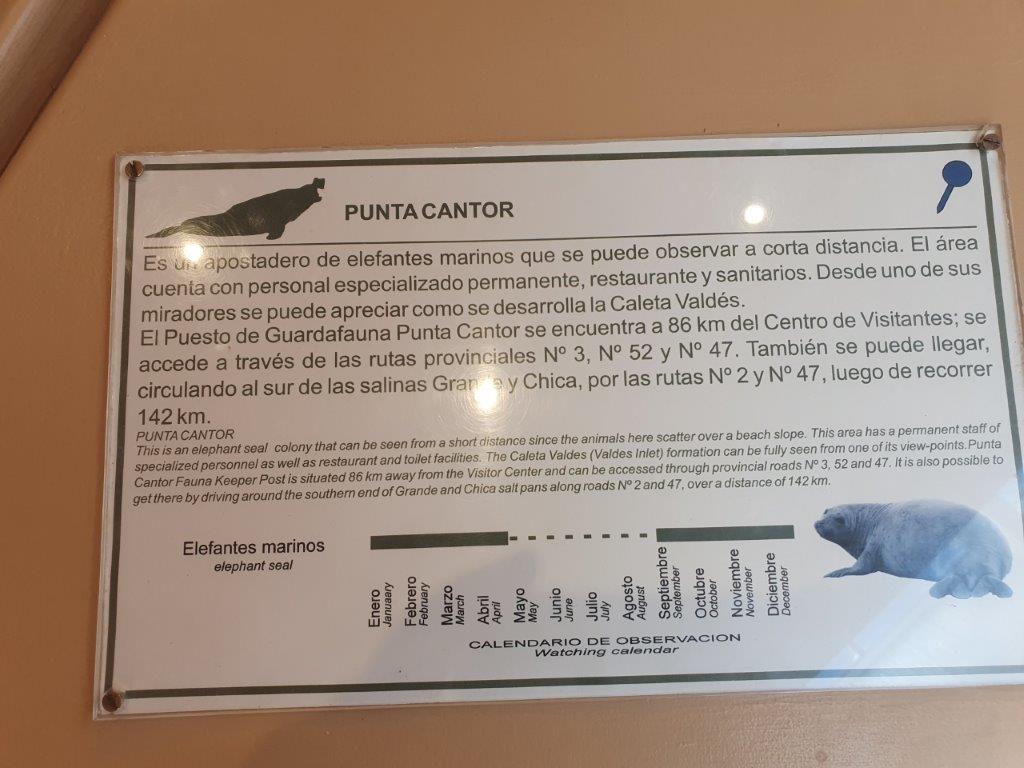
Beneath is a skull of a normal Southern American Sea lion which is much smaller than that of a Southern Elephant Seal.
The southern elephant seal (Mirounga leonina) is one of two species of elephant seals. It is the largest member of the clade Pinnipedia and the order Carnivora, as well as the largest extant marine mammal that is not a cetacean. It gets its name from its massive size and the large proboscis of the adult male, which is used to produce very loud roars, especially during the breeding season. A bull southern elephant seal is about 40% heavier than a male northern elephant seal (Mirounga angustirostris), twice as heavy as a male walrus (Odobenus rosmarus), and 6–7 times heavier than the largest living mostly-terrestrial carnivoran, the polar bear (Ursus maritimus) and the Kodiak bear (Ursus arctos middendorffi).
Huge Elephant Seals sunbathing, lying lazy in the sun…
The southern elephant seal is distinguished from the northern elephant seal (which does not overlap in range with this species) by its greater body mass and a shorter proboscis. The southern males also appear taller when fighting, due to their tendency to bend their backs more strongly than the northern species.
There were some male Elephant Seals but none large enough to have a huge trunk. Most seals were females…
This species may also exhibit the greatest sexual dimorphism of any mammal in terms of mass ratio, with males typically five to six times heavier than females.
On average female southern elephant seals weigh 350 to 900 kg (770 to 1,980 lb) and measure 2.6 to 3 m (8.5 to 9.8 ft) long, whereas bulls can range from 1,500 to 3,700 kg (3,300 to 8,200 lb) and grow to 4.2 to 5.8 m (14 to 19 ft) in length.
For comparison, among the northern elephant seal and the sperm whale (Physeter macrocephalus)—two other large marine mammals that are highly sexual dimorphic by size—males typically outweigh females by a factor of three to four.
Caleta Valdes
Walking towards the north, along the coastline, The Wandelgek reached the beautiful area of water behind a sand bank…
Caleta Valdés is a lagoon that reaches 35 km in a north-south direction, located to the east of the Valdés peninsula, Chubut province, Argentina.
It is a portion of sea separated from the Argentine Sea by a strip of land made up of boulders, gravel and sand, and connected to the open sea through a small mouth at its southern end. Inside there are two groups of islands with their own geomorphological characteristics (some of them are Primera, Segunda and Gaviota).
Its middle portion contains populations of Magellanic penguins, and the part closest to the mouth is used as a refuge by southern elephant seals between August and April, given its protection from the sea and the winds, making it one of the few roosts continental species of that species.345
Also, since 1983 it forms a Provincial Tourist Reserve of 10,000 ha, with the aim of preserving the local fauna.
In Punta Bajos is the Punta Bajos Lighthouse, belonging to the Argentine Navy, released to service on October 12, 1927.
Penguin
On top of the sand bank were some Magellanic penguins visible…
Orca Killer Whales
The orca or killer whale (Orcinus orca) is a toothed whale belonging to the oceanic dolphin family, of which it is the largest member. It is the only extant species in the genus Orcinus and is recognizable by its black-and-white patterned body. A cosmopolitan species, orcas can be found in all of the world’s oceans in a variety of marine environments, from Arctic and Antarctic regions to tropical seas.
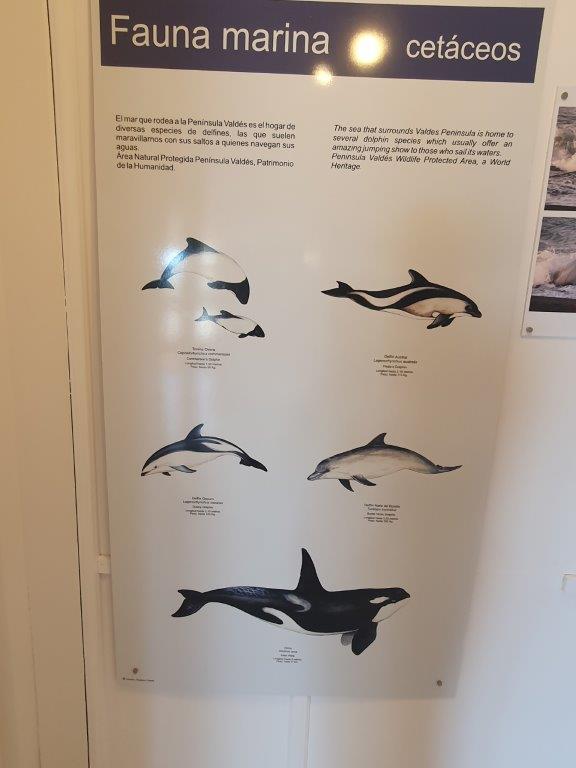 Orcas have a diverse diet, although individual populations often specialize in particular types of prey. Some feed exclusively on fish, while others hunt marine mammals such as seals and other species of dolphin. They have been known to attack baleen whale calves, and even adult whales. Orcas are apex predators, as they have no natural predators. They are highly social; some populations are composed of very stable matrilineal family groups (pods) which are the most stable of any animal species. Their sophisticated hunting techniques and vocal behaviours, which are often specific to a particular group and passed across generations, have been described as manifestations of animal culture.
Orcas have a diverse diet, although individual populations often specialize in particular types of prey. Some feed exclusively on fish, while others hunt marine mammals such as seals and other species of dolphin. They have been known to attack baleen whale calves, and even adult whales. Orcas are apex predators, as they have no natural predators. They are highly social; some populations are composed of very stable matrilineal family groups (pods) which are the most stable of any animal species. Their sophisticated hunting techniques and vocal behaviours, which are often specific to a particular group and passed across generations, have been described as manifestations of animal culture.
While walking along the coastline, The Wandelgek suddenly spotted a group of approximately 5 orca’s, patrolling the coast.
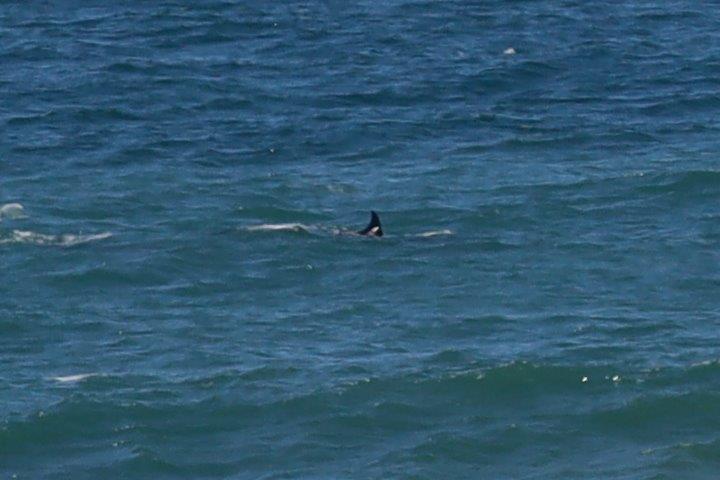 The orca’s know when to patrol the coast line. Spring is of course an ideal time for them to hunt whales, seals and penguins because these visit the coastline at the peninsula to give birth and to forage after their offspring is born.
The orca’s know when to patrol the coast line. Spring is of course an ideal time for them to hunt whales, seals and penguins because these visit the coastline at the peninsula to give birth and to forage after their offspring is born.
The picture above (and the 2nd one further down) were lucky shots because, although there are ten thousands of whales and seals in the Argentine coastal waters, the amount of orca’s is less than 6.000 and the Argentine coast is really long…
One of the hunting techniques of Orcas is to throw themselves on the beach (intentional stranding), thus surprising those seals which try to reach the “safe” shore, already thinking they escaped from its jaws or those sunbathing to close to the water’s edge…
The skull of an orca…
This was also one of the moments where The Wandelgek was really happy with his brand new Canon EOS R camera and new lenses. For the pictures above he used his Tele zoom lens and that was a good choice. The sea was glistening, there were lots of waves and a few rocks too, which made spotting these orca’s and following them with zoomed in telelens and binoculars quite a challenge. The Wandelgek was happy with these results because the orca’s were quite far away on the open Atlantic Ocean and The Wandelgek was not on a boat but walking on a coastal trail path.
After a walk on sandy paths on top of high cliffs and through some scrubs The Wandelgek reached a panoramic view point (or mirador in Spanish), from where he had this magnificent view over an inlet of water…
Isla de los Pajaros
Near the visitor center, at the National Park entrance a small island in the Golfo Nuevo drew The Wandelgek’s attention. It was the Isla de los Pajaros (Island of the Birds).
When The Wandelgek saw it lying there in the water, its typical shape remembered him of a famous classical children’s book which he read on a young age.
This book was The little Prince by Antoine de Saint Exupery, who had been a pilot in this area of Argentina for a while and who used the silhouette of the island for some drawings in his famous book.
In this book he draws a Boa Constrictor, which slowly digests an Elephant:
Obvious, but for grown ups the drawing needed some more explanation after they confused it with a hat: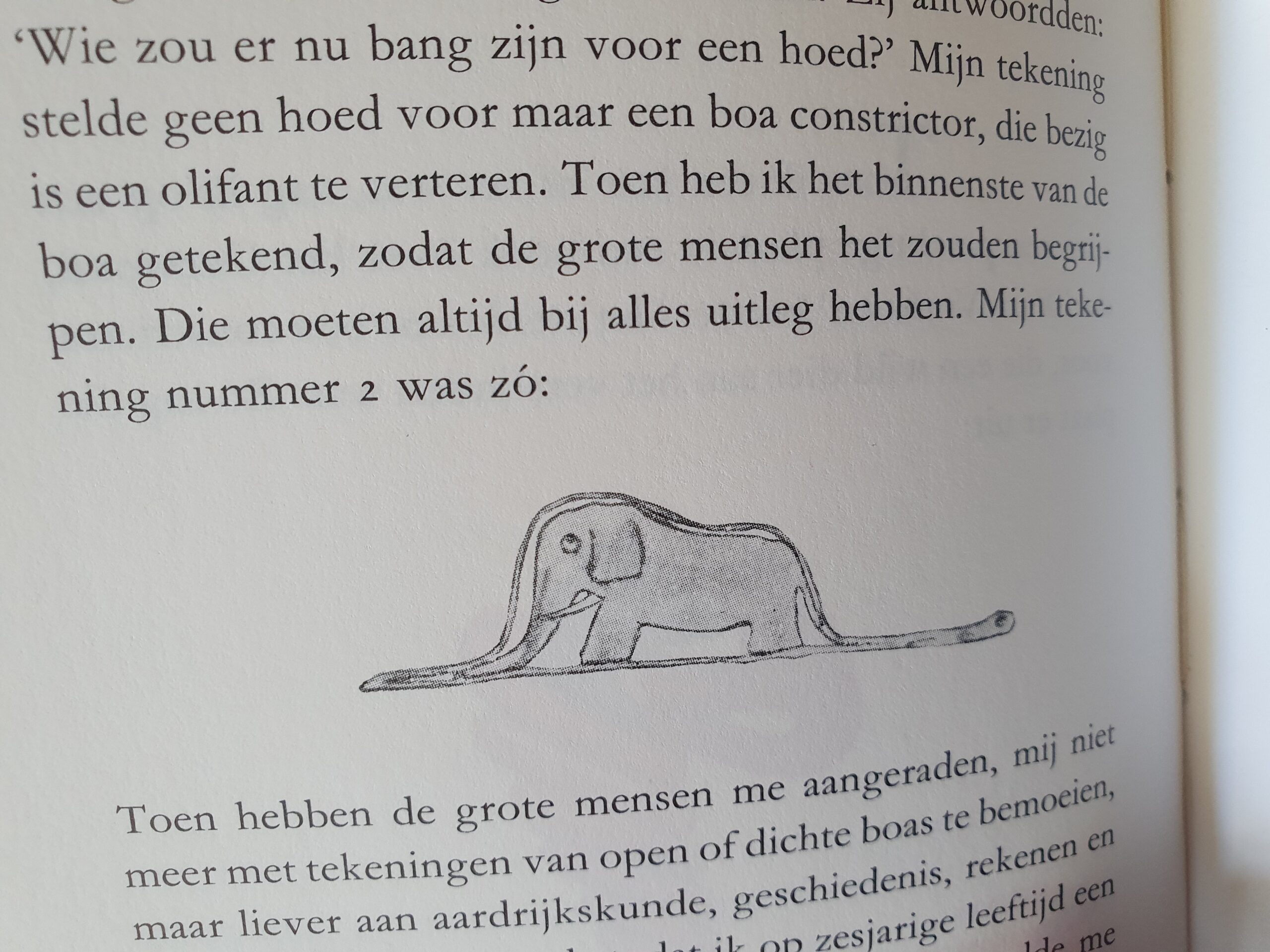 Isla de los Pájaros is a small island located near the coast of the Carlos Ameghino Isthmus (which joins the Valdés Peninsula with the American continent) on the San José Gulf, in the Biedma department in the Chubut province (Argentine Patagonia). Its approximate dimensions are 300 meters in a North-South direction and 200 meters in an East-West direction. It is an island where a large number of birds of different species live. It is not really an island, since it is a portion of the Patagonian plateau that has been separated from the rest by erosion and at low tide it is joined to the continent by a tongue of land, thus constituting a tombolo (A tombolo is a sandy or shingle isthmus. A tombolo, from the Italian tombolo, meaning ‘pillow’ or ‘cushion’, and sometimes translated incorrectly as ayre (an ayre is a shingle beach of any kind), is a deposition landform by which an island becomes attached to the mainland by a narrow piece of land such as a spit or bar. Once attached, the island is then known as a tied island.).
Isla de los Pájaros is a small island located near the coast of the Carlos Ameghino Isthmus (which joins the Valdés Peninsula with the American continent) on the San José Gulf, in the Biedma department in the Chubut province (Argentine Patagonia). Its approximate dimensions are 300 meters in a North-South direction and 200 meters in an East-West direction. It is an island where a large number of birds of different species live. It is not really an island, since it is a portion of the Patagonian plateau that has been separated from the rest by erosion and at low tide it is joined to the continent by a tongue of land, thus constituting a tombolo (A tombolo is a sandy or shingle isthmus. A tombolo, from the Italian tombolo, meaning ‘pillow’ or ‘cushion’, and sometimes translated incorrectly as ayre (an ayre is a shingle beach of any kind), is a deposition landform by which an island becomes attached to the mainland by a narrow piece of land such as a spit or bar. Once attached, the island is then known as a tied island.).
The nearby maritime area has great biological value since it is used as a reproductive area by ten different species of marine and coastal birds such as: the kelp gull, rock shags, biguás, oystercatchers, white and witch herons, steam duck, juarjual duck and Magellanic penguins. This last species of penguins has the particularity that they appeared in the area approximately 20 years ago, and today there are more than 200 nests. While on the nearby beach you can see flamingos, terns and brown hooded seagulls, depending on the season.
On the coast there is a viewpoint that allows you to see the island and the fauna that exists on it and nearby. There is also a wildlife ranger service that provides information on the fauna and flora of the area. On the nearby coast of the Ameghino Isthmus, Fort San José was located, an attempted Spanish colonization destroyed in 1810.
The Wandelgek drove back to Puerto Madryn to have a last beautiful evening at the beach and to have dinner in town, before he would move on the next day, towards and crossing the Patagonian plateau, straight through the ominous Patagonian desert.
He chose to have dinner at Cerveceria Irlanda…
, which had good sturdy food, like e.g. this delicious tray of langostines with rice, vegetables and roasted bread, and…
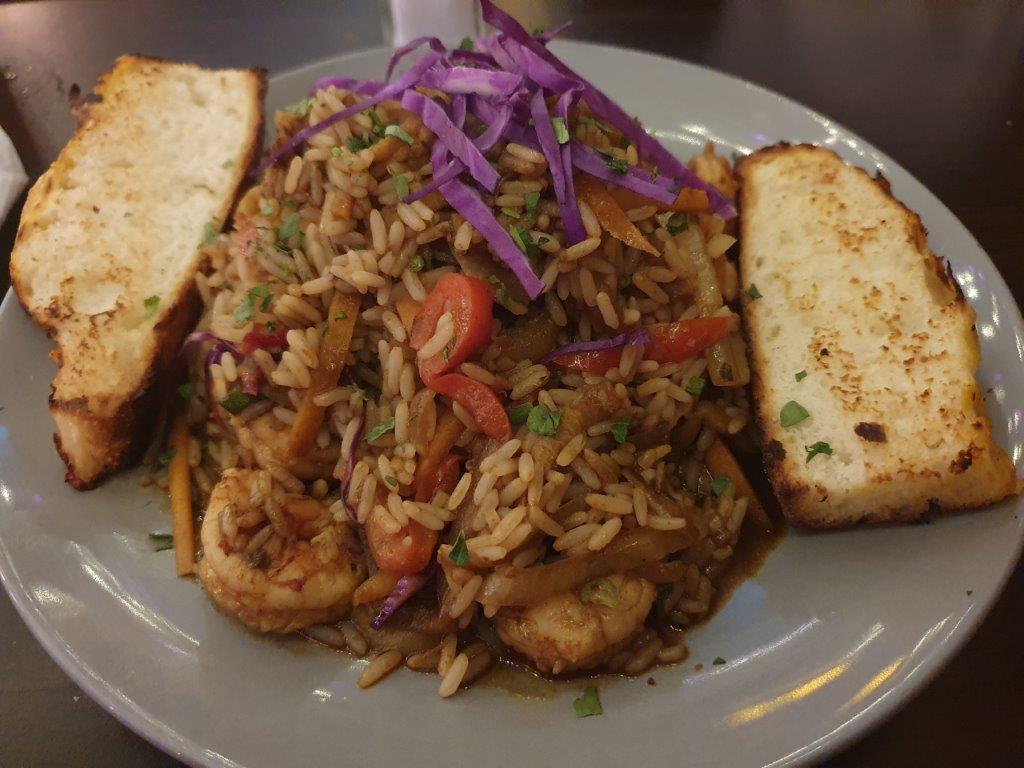 a great selection of beers, of which the red beers like the Scottish and the Amber were The Wandelgek’s favorites, as well…
a great selection of beers, of which the red beers like the Scottish and the Amber were The Wandelgek’s favorites, as well…
Then The Wandelgek returned to his hotelroom to see replays of some of today’s football matches.

